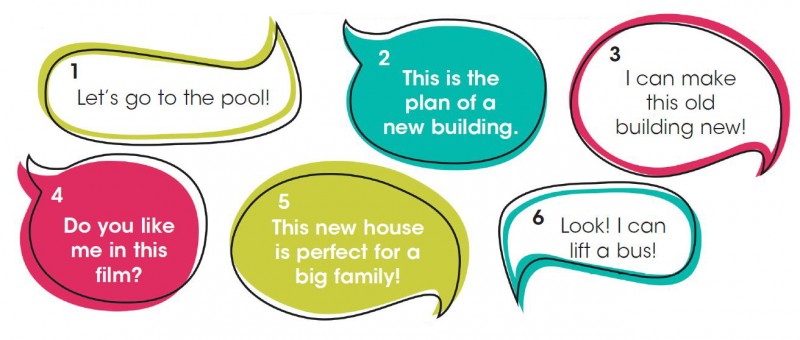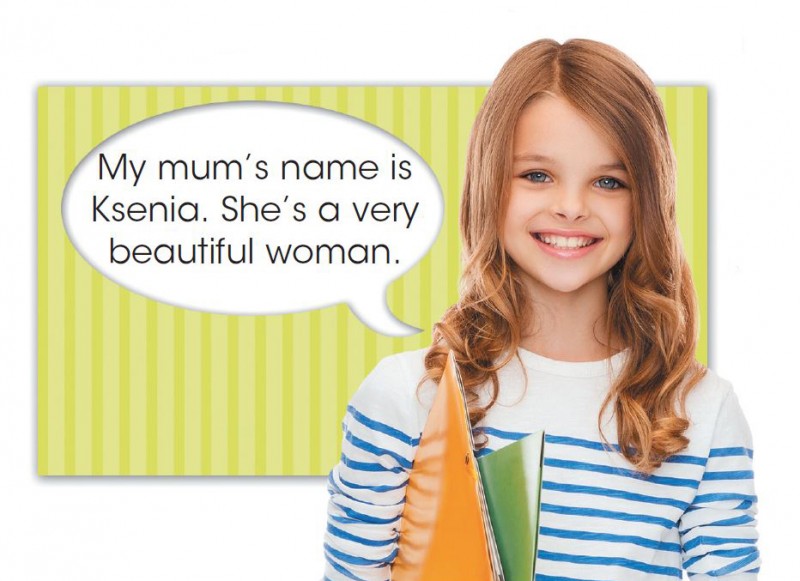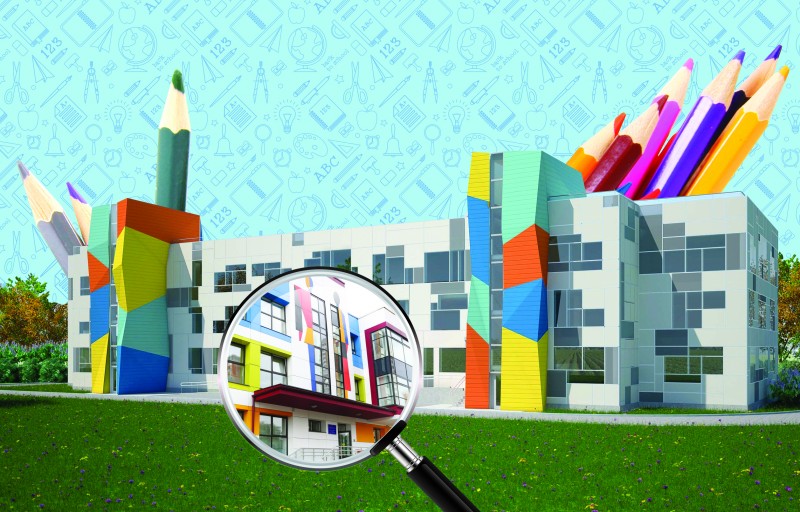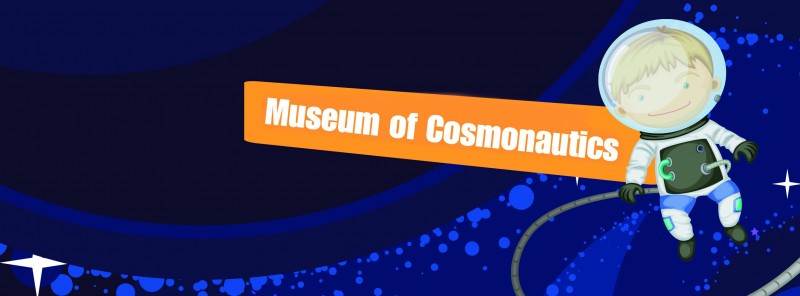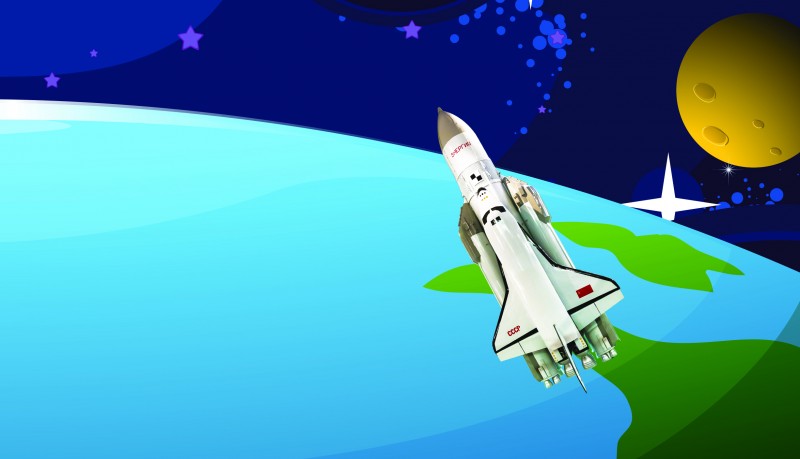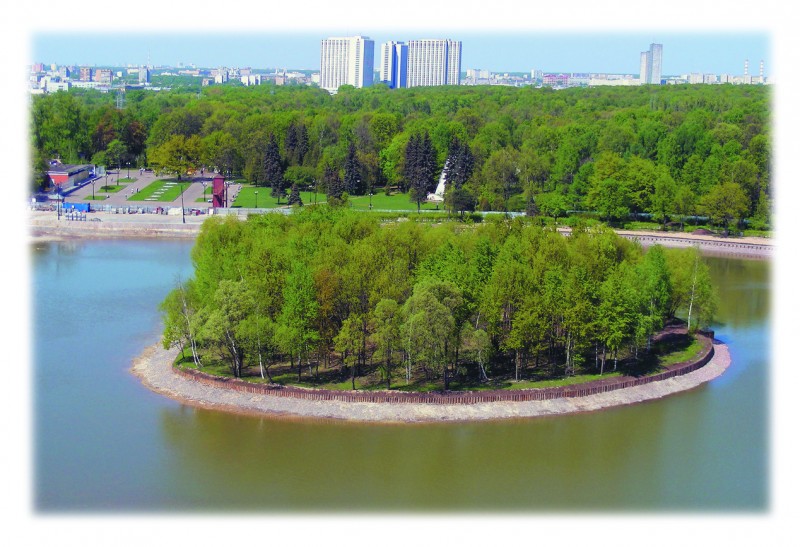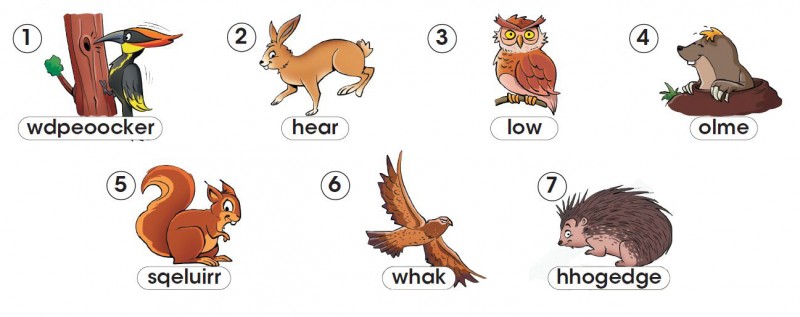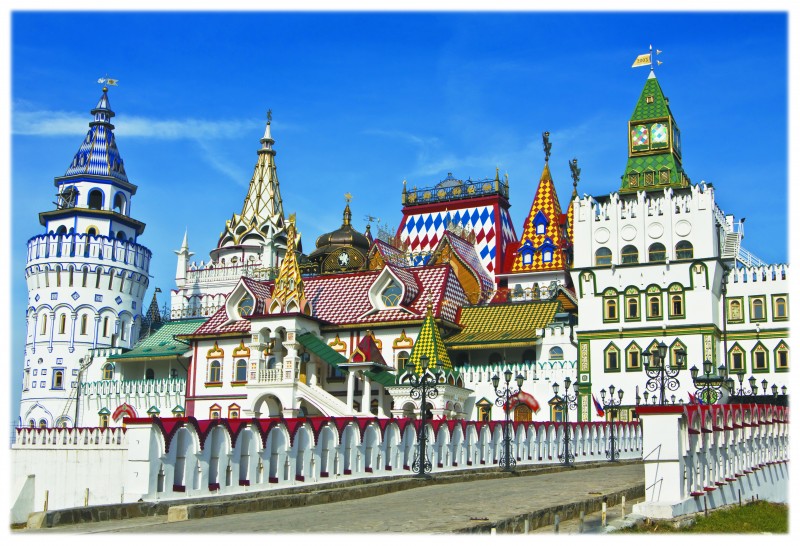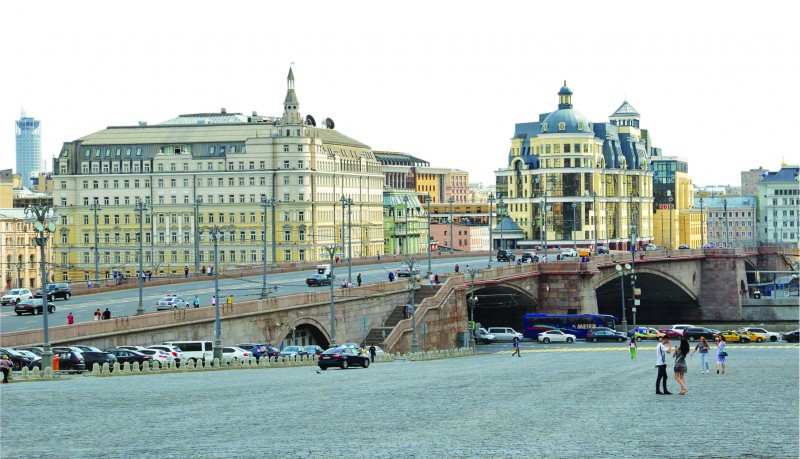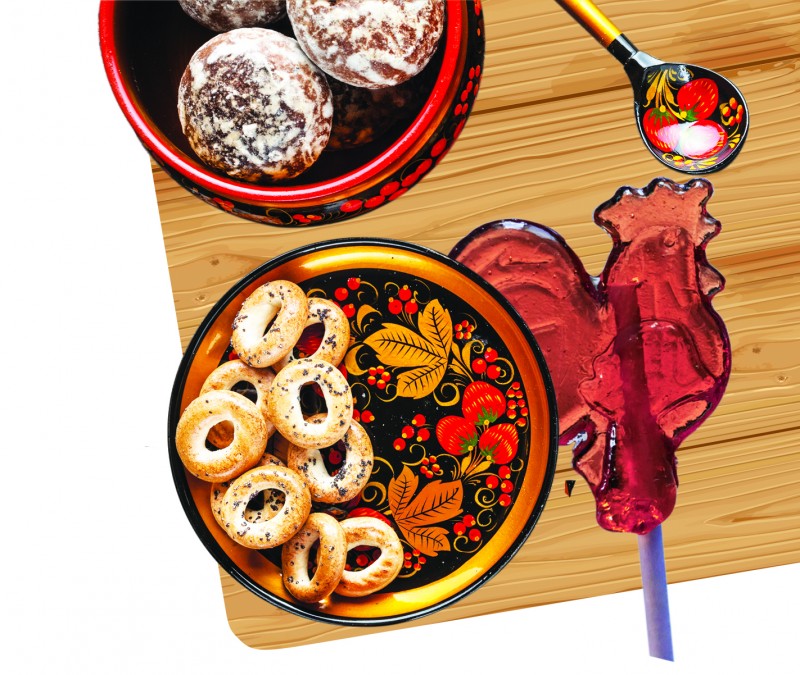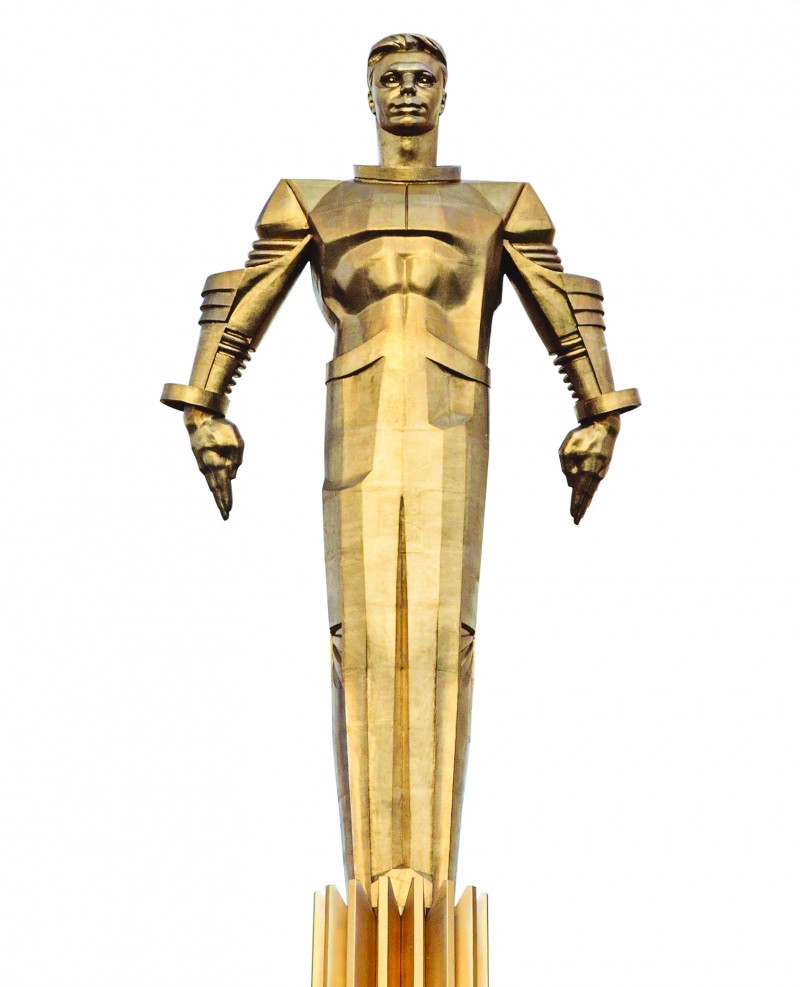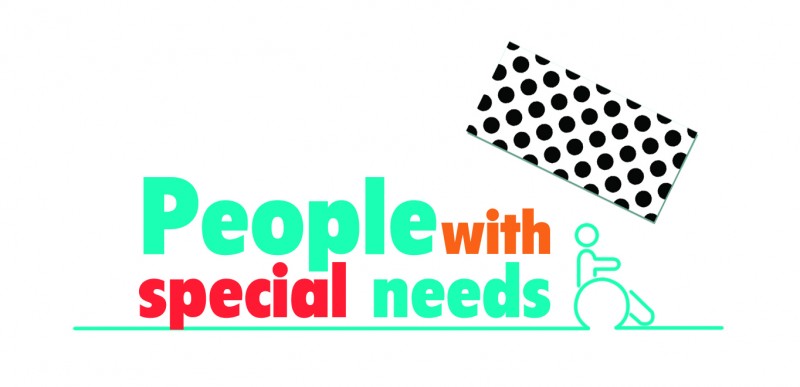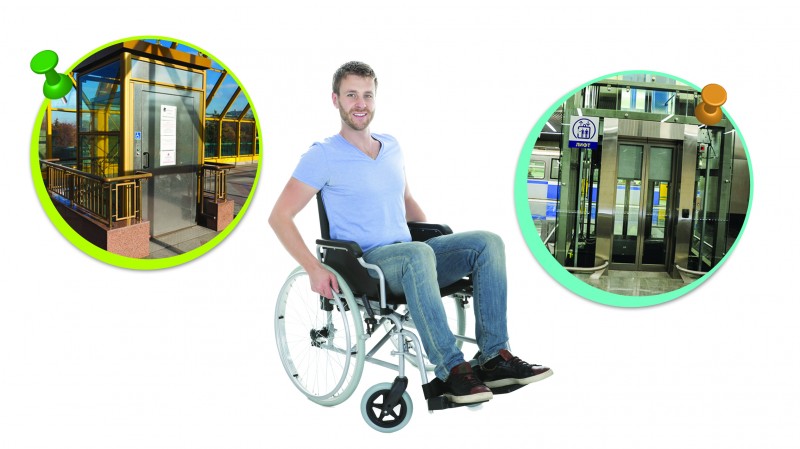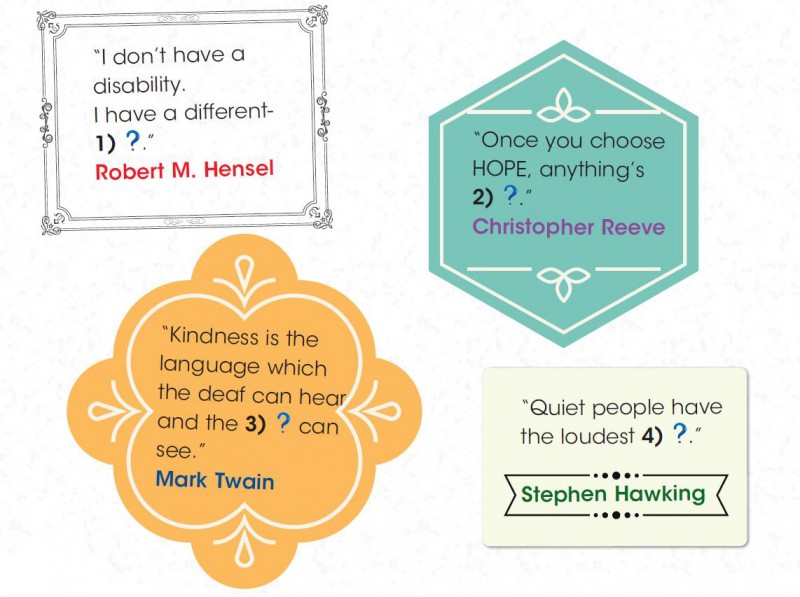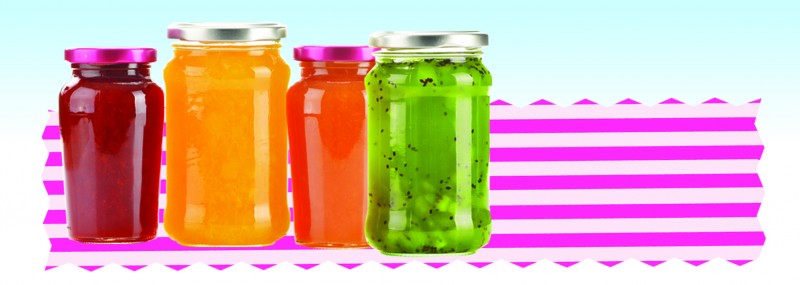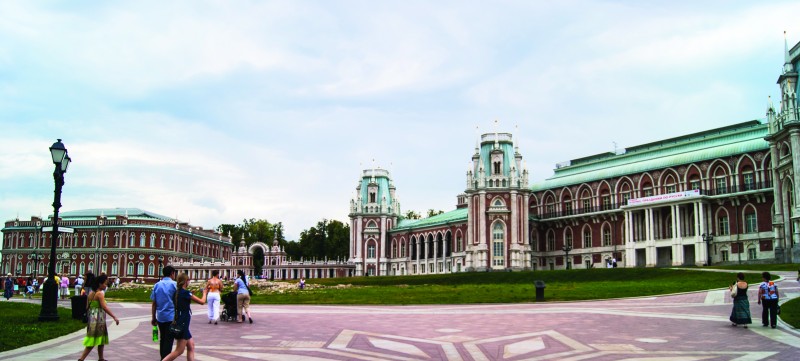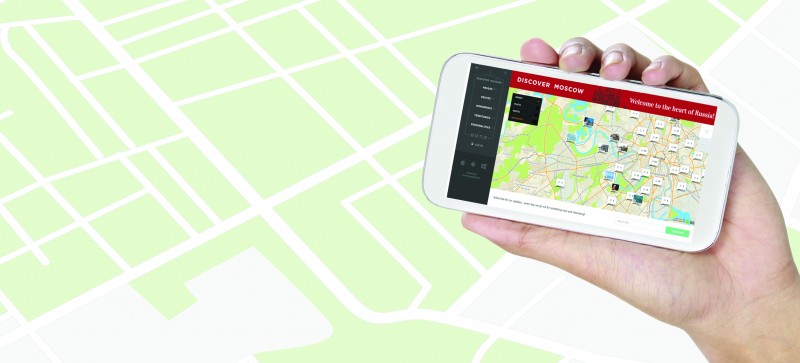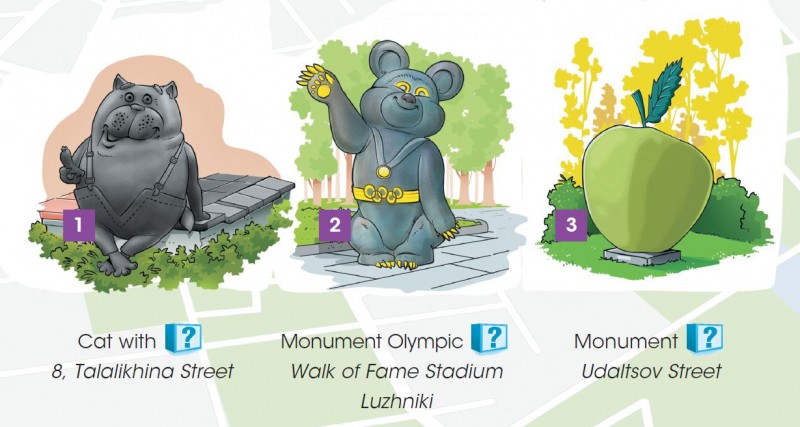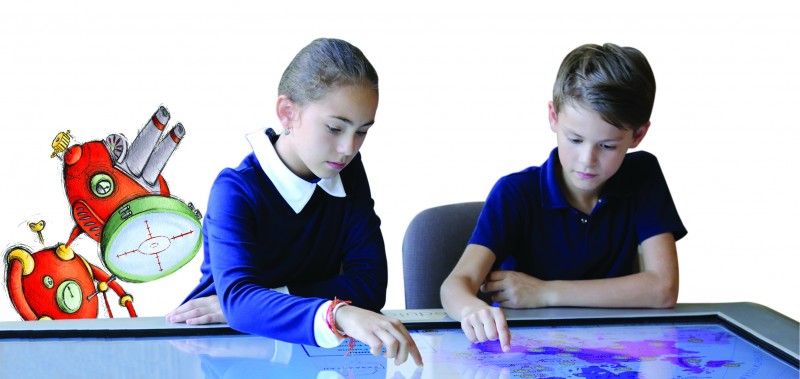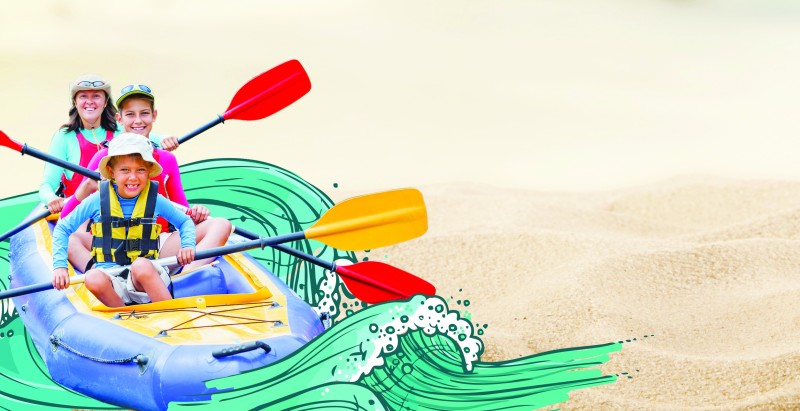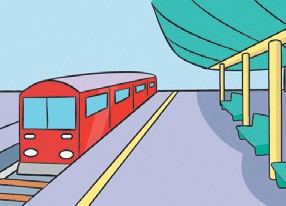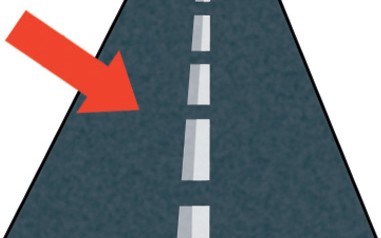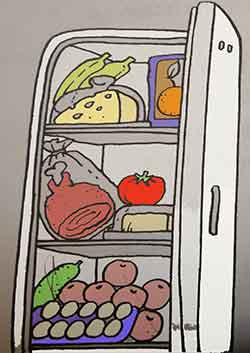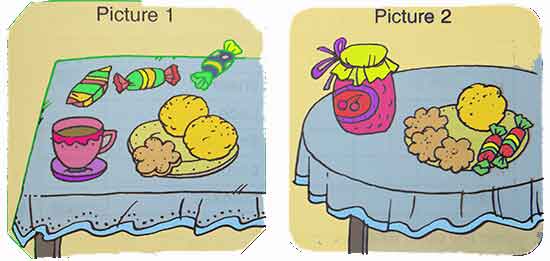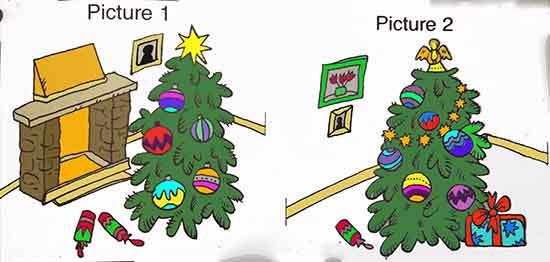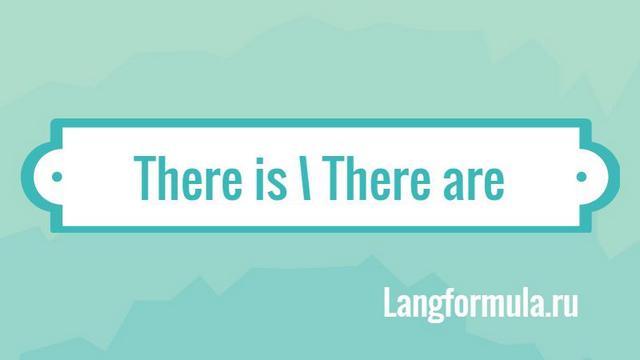MOSCOW INTERACTIVE
Exercise 1, p. 14

riverpoolbuilderarchitectactress
Exercise 2, p. 14

My name is Anton and I’m 10 years old. I live with my mum and dad in Moscow, in Izmaylovo.
My mum’s name is Maria and she is an actress. She is very beautiful, with long fair hair. My mum is really kind and friendly, too. I do a lot of fun things with my mum. She can swim very well and we often go to the pool together.
I like to watch films with my mum in them. In her films she can be young or old. She can fly over houses and across rivers. She can even ride a skateboard on her head! She can do everything! My friends think she is a really wonderful mum!
My dad’s name is Pavel. He is tall and handsome and also very funny and kind. My dad has got an interesting job. He is an architect. The word ‘architect’ is a Greek word that means ‘the main builder’! My father makes plans for new buildings in Moscow. He also rebuilds old houses. Architects have got an important job because they make sure the places where people live and work are comfortable and attractive. I think my dad is great.
I love my wonderful family!
Exercise 3, p. 15

|
1 How old is Anton? |
|
|
2 Where does he live? |
|
|
3 What is his mother’s job? |
|
|
4 What does Anton’s mother look like? What is she like? |
|
|
5 What is his father’s name? |
|
|
6 What does he look like? What is he like? |
|
|
7 What is his job? |
|
|
8 Why have architects got an important job? |
Exercise 4, p. 15
Who is talking? Read and say Anton’s mum or Anton’s dad.
1 Anton’s mum Anton’s dad
2 Anton’s mum Anton’s dad
3 Anton’s mum Anton’s dad
4 Anton’s mum Anton’s dad
5 Anton’s mum Anton’s dad
6 Anton’s mum Anton’s dad
Exercise 5, p. 15

|
1 ugly ≠ |
beautiful |
|
2 short ≠ |
|
|
3 old ≠ |
|
|
4 boring ≠ |
*Now, use the adjectives to describe members of your family.
Exercise 6, p. 15
Over to you: Answer the questions.
|
1 How old are you? |
|
|
2 Where do you live? |
|
|
3 What is your mum’s job? |
|
|
4 What does your mum look like? What is she like? |
|
|
5 What is your dad’s name? |
|
|
6 What does he look like? What is he like? |
|
|
7 What is his job? |
Exercise 7, p. 15
Write about your wonderful family. Use the answers to the questions in Ex. 6.
Exercise 1, p. 30

Exercise 2, p. 30


• Moscow is the capital city of the Russian Federation. It is an old city, around 860 years old.
• Travelling to and from Moscow is never a problem. It has got three 1) 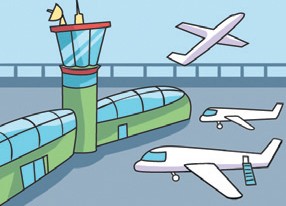
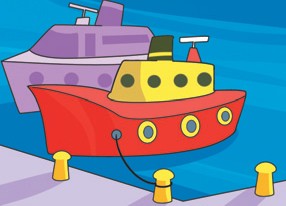
• You can go everywhere in Moscow by metro. The Moscow Metro is one of the longest in the world. The city has also got a lot of bus, 3) 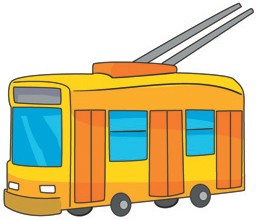
• Moscow is a very green capital. There are over 100 parks and many gardens and 4) 
• Moscow is a capital filled with culture, too. There are over 170 theatres and 5) 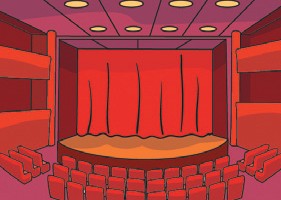
• Moscow is a great city for children, too. They can enjoy the Moscow Zoo, or go to one of the two circuses in the city. There are also two botanical gardens where children can learn about plants and trees.
• For sports lovers, Moscow is a dream city. There are five big stadiums and a lot of pools and 6) 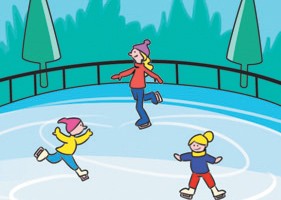
• The capital welcomes visitors from home and abroad. Today Moscow has got more than 360 hotels. A visit to Moscow will give you plenty to see and do and is definitely worth the trip!
Exercise 3, p. 30
Read the text again and say yes or no.
|
1 Moscow is around 860 years old. |
yes |
|
2 The Moscow Metro can only take you to the city centre. |
yes |
|
3 You can watch a film or a play in Moscow. |
yes |
|
4 You can’t see wild animals in Moscow. |
yes |
|
5 You can’t go ice skating in Moscow. |
yes |
Exercise 4, p. 31
Janet is a tourist in Moscow. Answer her questions.
1. How old is Moscow?
2. Are there any parts?
3. How can I travel around Moscow?
4. Where can I relax?
5. Where can I go and learn about plants and trees?
Exercise 5, p. 31
Over to you: Find some more facts about Moscow. Present them to the class.
Exercise 1, p. 52

citizenhospitalplayground
Exercise 2, p. 52

Today schools, kindergartens and hospitals in Moscow don’t look the same as in the past. They have got many different shapes, sizes and colours. Because these buildings are so interesting, they become the centre of each district. Architects now use modern materials and paint all kinds of designs on the front walls of schools. You can even say where your classroom is by looking at the design on the wall! There are also safe and beautiful playgrounds for sports and games near the schools.
Modern schools and kindergartens are just like robot-transformers! You can move the walls around inside the school, so you can turn classrooms into large common rooms and sleeping rooms into playrooms. How cool! Just like every person has got a different face, every building has got a different front wall, or face. Moscow schools are all different in colour and shape but they have all got one thing in common – every person and citizen can study there!
Exercise 3, p. 53

the centre of each district.by looking at the design on the wall.don’t look the same as in the past.into large common rooms.near the schools.
|
1 Modern schools, kindergartens and hospitals |
|
|
2 These buildings are |
|
|
3 You can say where your classroom is |
|
|
4 There are safe and beautiful playgrounds |
|
|
5 You can turn classrooms |
Exercise 4, p. 53

|
1 what we call schools for young children. |
|
|
2 a word that is the opposite of different. |
|
|
3 what we call the buildings we go to when we are ill. |
|
|
4 a word that is the opposite of boring. |
|
|
5 what we call places we go to when we want to have fun. |
Exercise 5, p. 53
Over to you: Imagine you are an architect. Design a new school. Think about:
1. What shape is it?
2. Is it big or small?
3. What colour(s) is it?
4. Is there a playground near it?
5. What can classrooms turn into?
Exercise 1, p. 68

Exercise 2, p. 68


Would you like to go on a space trip to distant 1) 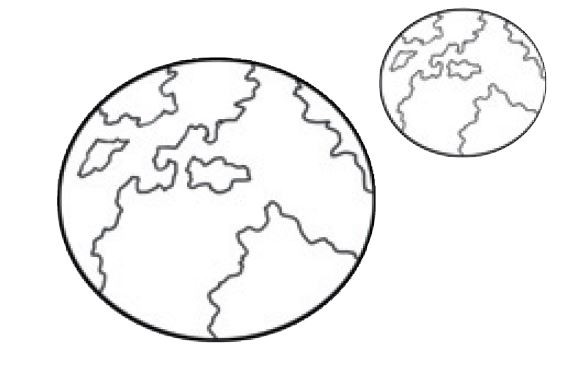
The museum opened in 1981 to celebrate the 20th anniversary of the first manned 2) 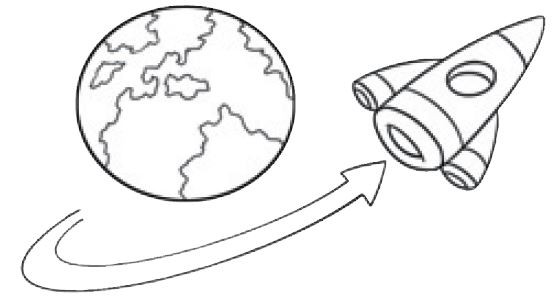

There are models of the first 4) 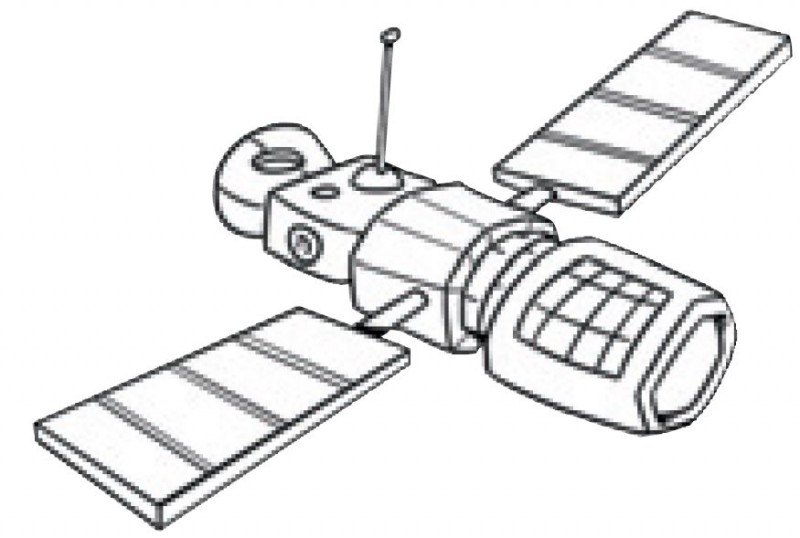
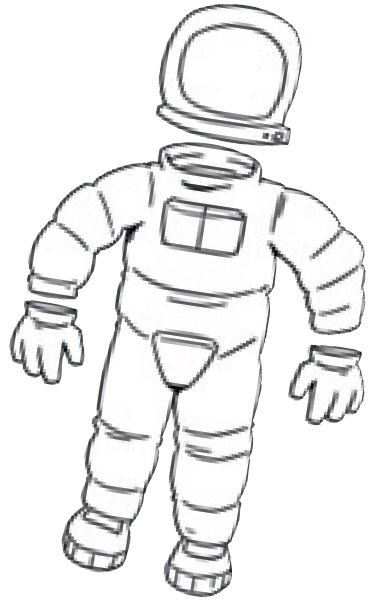
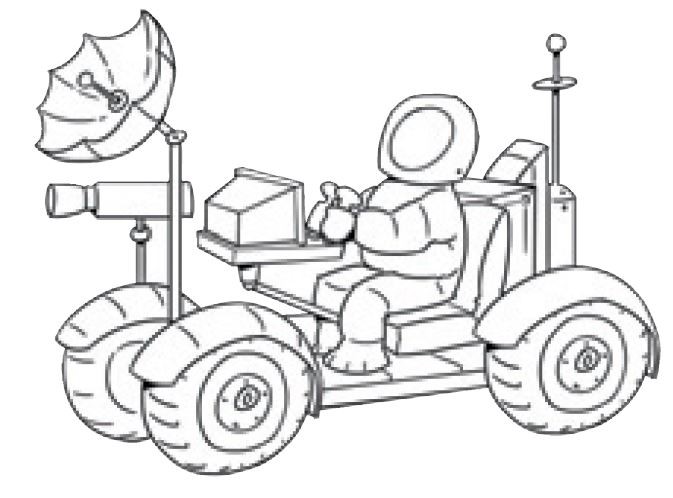
You can also see models of Belka and Strelka, the first dogs to go into orbit and come back! There is an interesting film too, about the animals preparing for the trip.
In the big hall there is an exact copy of the Mir 7) 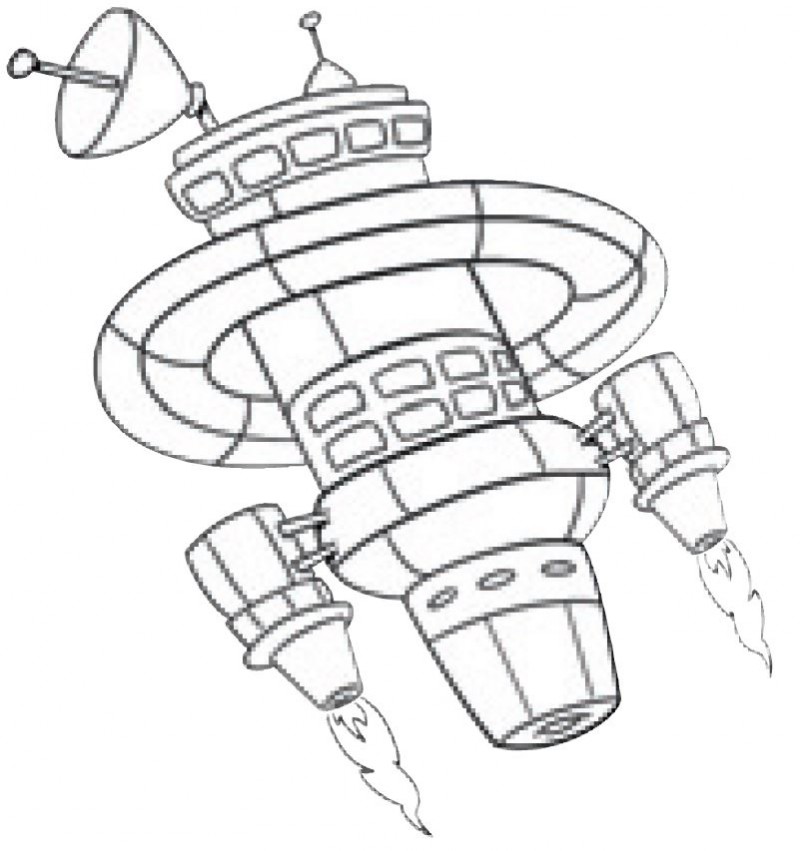
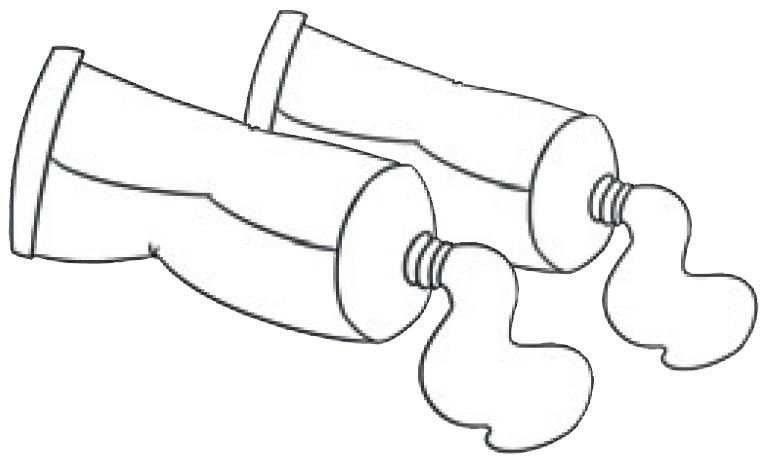
The museum organises evening activities where you can meet real cosmonauts. Wow! That’s a great way to spend an evening!
Exercise 3, p. 69

|
1 The Space Museum is at … |
|
|
2 The museum opened in … |
|
|
3 The names of the first dogs in orbit were … |
and |
|
4 You can go inside the … and see how cosmonauts live and work. |
|
|
5 You can go to the museum in the … and meet real cosmonauts. |
Exercise 4, p. 69
Think of another museum and answer the questions.
|
1 What is its name? |
|
|
2 Where is it? |
|
|
3 When did it open? |
|
|
4 What can you see and do there? |
Exercise 5, p. 69
Over to you: Write about a museum. Use the answers to the questions in Ex. 4.
Exercise 1, p. 90

Exercise 2, p. 90

Moscow may be a big, busy city but there are still many green areas to enjoy. They include parks, gardens and forests. One of the biggest and most beautiful forests is in Izmailovsky Park, in the east of the city.
Izmailovsky Park has got a long history. There was a village there. Its name was Izmailovo. There’s an island in the park, too. There is an old palace on the island. There is also a pond as well as the river Serebryanka and many streams that run across the park.
A variety of amazing animals live in the park, including hares, squirrels, hedgehogs and moles. Over a hundred species of birds live there, too. You can find hawks, owls, woodpeckers and many sweet-sounding songbirds!
Izmailovsky Park is truly a place of wonder and it is the perfect place to go when you want to have a break! Today, there is a hotel near the park. You can stay there and enjoy the beauty of the area!
Exercise 3, p. 91

Exercise 4, p. 91

1 Izmailovsky Park is in the west of Moscow.
2 There was a forest in the park.
3 There is an old park on the island.
4 Today there is a village on the island.
5 Today, there is a river on the island.
Exercise 5, p. 91
Think of another park. Answer the questions.
1. What’s the name of the park?
2. Where is it?
3. What can you see there?
4. What animals live there?
Exercise 6, p. 91
Over to you: Write about a park. Use the answers to the questions in Ex. 5.
Exercise 1, p. 106

Exercise 2, p. 106


Moskvoretsky Bridge
Today, the Moskvoretsky Bridge in Moscow is a long 1) with eight 2) , and it’s one of the busiest bridges in the city. It is very different from the old wooden bridge which used to connect Pyatnitskaya Street and Moskvoretskaya Street. But there is one thing that stays the same. The view of the city from the bridge is amazing!
Museum of Russian Desserts “Konfektnaya”
When you visit the Museum of Russian Desserts in Merzlyakovsky Lane, 15, it feels like you just travelled back in time to a sweet shop of the 19th century! There are old posters with ads for chocolate, 3) , caramels and sweets. You can also treat yourself to a real Russian tea party with traditional desserts made from recipes of long ago! And if that’s not enough, there are even classes where you can learn how to make sugar flowers and chocolate with berries, 4) and even flowers. How delicious is that?
Yuri Gagarin monument
The Yuri Gagarin monument in Leninsky Avenue in Moscow is a fantastic monument to the first man in space. A forty-two-metre 5) of the most famous cosmonaut in the world stands on top of a very high base. It really does make Yuri Gagarin look like the superhero he was in life!
Exercise 3, p. 106

|
1 SRARCHKL |
It is an bridge with lanes. |
|
2 TESUGARA |
You can learn how to make things from there. |
|
3 SBASETAU |
It is on a very high . |
|
4 MONUMENTSC |
This is in Leninsky Avenue. |
|
5 SSWEETSHOPUG |
It looks like a from the past. |
|
6 AVIEWMZILN |
The from there is amazing! |
Exercise 4, p. 107
Which of the places do the sentences in Ex. 3 refer to?
Read again and say.
| 1 |
Moskvoretsky Bridge |
| 2 |
Moskvoretsky Bridge |
| 3 |
Moskvoretsky Bridge |
| 4 |
Moskvoretsky Bridge |
| 5 |
Moskvoretsky Bridge |
| 6 |
Moskvoretsky Bridge |
Exercise 5, p. 107
Think of another interesting place in Moscow and answer the questions.
1. What is its name?
2. Where is it?
3. What is special about it?
Exercise 6, p. 107
Over to you: Make a poster about an interesting place to visit in Moscow. You can use the answers to the questions in Ex. 5. Present the poster to the class.
Exercise 1, p. 16

rampwheelchairliftblindtile
Exercise 2, p. 16

People are often not as understanding as they should be towards those who are different or have special educational needs. The most important thing that we must all remember is that we should treat everyone with respect.
In Moscow, the government and all the citizens try to make the city as people-friendly as possible. For example, there are wheelchair ramps, special lifts and even special tiles and signals for the blind. But is this enough? We should also give every citizen the opportunity to express themselves and develop their talents. In Moscow many organisations work with this goal in mind. One of them is a centre called ‘Integration’. Their motto is ‘Culture that is available for everyone!’ At the centre they work hard to make sure that everyone accepts and respects other people’s differences. The people at the centre encourage people with special needs to express themselves through music, poetry, literature and art. Because we are all equal when it comes to creativity!
Exercise 3, p. 17

and signals for the blind.through music, poetry, literature and art.with respect.make the city people-friendly.ramps.is called ‘Integration’.
|
1 We should treat everyone |
|
|
2 In Moscow the government and the citizens try to |
|
|
3 There are wheelchair |
|
|
4 There are special tiles |
|
|
5 A centre in Moscow |
|
|
6 People with special needs at the centre express themselves |
Exercise 4, p. 17

abilityblindmindspossible
Exercise 5, p. 17
Over to you: You are members of a new centre for people with special needs. In groups, think of a name and a motto for the centre. Make a poster. Draw or attach some pictures.
Exercise 1, p. 32

cactuswalnutmazetentlollipop
Exercise 2, p. 32


Everybody loves jam! Chefs from all over the world come to Moscow in August to take part in the Moscow Jam Festival. They bring a lot of different kinds of jam with them.
Every summer you can see big 1) 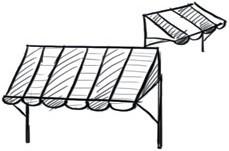
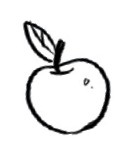
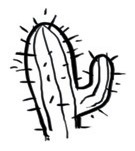
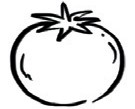
There are also many different competitions to choose from such as ‘Guess what flavour this jam is?’ Could you tell the different jams apart? There are many other fun activities too. Sometimes chefs make huge 5) 

Exercise 3, p. 33

|
1 The Moscow Jam Festival is in the summer. |
yes |
|
2 You can see big tents only in Arbat Street. |
yes |
|
3 You can taste different kinds of jam. |
yes |
|
4 You can take part in a competition. |
yes |
|
5 Chefs make small lollipops for the visitors to taste. |
yes |
|
6 You can see paintings of jam. |
yes |
Exercise 4, p. 33
Imagine you are a famous chef. Make your own unusual jam. Present it to the class.
Exercise 5, p. 33
Think of a festival and answer the questions.
1. What is the name of the festival?
2. When is it? Where?
3. What can you see and do there?
Exercise 6, p. 33
Over to you:Write about a festival. Use the answers to the questions in Ex. 5.
Exercise 1, p. 54

destroypaviliontowerfountain
Exercise 2, p. 54


she wanted to build her royal palace thereit was worth the waiteven musical fountainsCatherine II diedshe didn’t like what she saw
The Tsaritsyno state museum and reserve is the biggest park in Moscow. Empress Catherine II of Russia loved the beauty and nature of the area, which at that time was called Bogorodskoye, and .
In 1776, the famous architect Vasily Bazhenov started to build the royal palace. Nearly ten years later, it was almost ready. But when the Empress visited the palace, and ordered the builders to destroy everything! Another architect, Matvey Kazakov started to rebuild the palace in 1786. Sadly, in 1796, all construction stopped because . It was another 200 years before the final completion of the palace, but !
Today you can see beautiful palaces, pavilions, towers, bridges, ponds and ! The beauty of the palace attracts many visitors and there are also exhibitions, concerts and music festivals that you can go to. A visit to the Tsaritsyno museum and reserve is a fantastic and enjoyable day out for all the family!
Exercise 3, p. 55

because the Empress died.to build the royal palace In 1776.because she didn’t like it.music festivals that you can go to.to rebuild it in 1786.in Moscow.
|
1 The Tsaritsyno state museum and reserve is |
|
|
2 The famous architect Vasily Bazhenov started |
|
|
3 The Empress ordered the builders to destroy the palace |
|
|
4 Matvey Kazakov started |
|
|
5 The construction work stopped in 1796 |
|
|
6 Today there are exhibitions, concerts and |
Exercise 4, p. 55

|
1 Catherine II of Russia was born in 1729. |
EMPEROR |
|
2 We visited the reserve and admired the of the area. |
BEAUTIFUL |
|
3 The architect ordered the to destroy everything. |
BUILD |
|
4 There are a lot of in the museum. |
EXHIBIT |
|
5 A visit to the museum is an day out for the whole family! |
ENJOY |
Exercise 5, p. 55
Think of a museum and answer the questions.
1. What is the name of the museum?
2. Where is it?
3. What do you know about its history?
4. What can you see and do there?
Exercise 6, p. 55
Over to you: Write about a museum. Use the answers to the questions in Ex. 5.
Exercise 1, p. 70

poetmobile phonepoliticianshareclue
Exercise 2, p. 70


Join the users of Discover Moscow Photo and learn the history 1) of/in your country! Take selfies and share them 2) to/with your friends.
Discover Moscow Photo is an interesting way 3) of/to learn the history of Russia and meet famous people from the past. You can meet and take photos with great writers, poets, composers, artists and politicians.
Look 4) at/for these people with the help of clues on your mobile phone and take selfies with well-known people such 5) as/like Alexander Pushkin, Pyotr Tchaikovsky, Yuri Gagarin and many others!
By using the application you can:
• find 3D models 6) of/from famous people in the streets of Moscow;
• learn to recognise famous buildings as well 7) so/as places built by famous people;
• take and share photos!
So, what are you waiting for/at ? Get your mobile phone and go out and explore the amazing city of Moscow!
Exercise 3, p. 70

1 Discover Moscow Photo helps you learn the history of .
2 You can take selfies and share them with your .
3 You can find famous people with the help of on your mobile phone.
4 You can see models of famous people in the streets.
Exercise 4, p. 71

He was a poetHe was an artistHe was a writerHe was a composer
Exercise 5, p. 71

Exercise 6, p. 71
Over to you: Visit the Discover Moscow site, www.um.mos.ru/en/. Choose a monument or a personality. Present it to the class.
This is … . He was a(n) … . This is … . It’s in … .
Exercise 1, p. 92

overhead projectorlaptoptabletheadset
Exercise 2, p. 92

Going to school in Moscow is really cool! Moscow schools are modern and well-equipped, and are among the best in the world!
New technology is everywhere! To start with, Moscow pupils use electronic cards ‘Moskvenok’ to enter their schools and parents use an electronic mark-book to check their children’s marks. In many of the classrooms there is an overhead projector or an interactive whiteboard. Today, pupils and teachers use computers, laptops, science labs, 3D-printers and other equipment. Of course, pupils still use textbooks to study, but now they also have a chance to take virtual tours, watch educational videos and even communicate with their classmates and teachers on the Internet. It’s all so interesting!
So if Moscow schools are cool today, just imagine what they will be like in the nearest future! Perhaps pupils will fly to school in small cars which will run on energy from the sun! They won’t use notebooks for writing because they will do all their homework on personal tablets instead! They will also use special virtual reality headsets to study subjects like Geography, Physics and Biology. And what about teachers? Imagine a future where robots will sometimes teach pupils instead! The future looks very exciting for Moscow schools!
Exercise 3, p. 93

virtual tourspersonal tabletsvirtual reality headsetselectronic mark-bookelectronic cards
|
1 Pupils use these to enter their schools. |
|
|
2 Parents use this to find their children’s marks. |
|
|
3 Pupils take these to watch education videos. |
|
|
4 Pupils may do all their homework on these in the future. |
|
|
5 Pupils may use these to study subjects like Geography, Physics and Biology. |
Exercise 4, p. 93

1 There (not/be) any schools, but learning centres instead. They (be) open seven days a week, 24 hours a day.
2 Students (hear) and see teachers on computers. Teachers (not/be) present.
3 Students (take) a learning pill and they (know) everything straight away.
4 Robots (go) to the students’ houses every morning and (teach) them.
5 Students (visit) other planets on school trips.
Exercise 5, p. 93
Over to you: What will schools be like in the future? Make predictions. Present them to the class.
Exercise 1, p. 108

go hikingcanteenexpeditiongo rafting
Exercise 2, p. 108


work out how to get therewhere everyone eatslearn computer programmingplay and chat with your friendshelp cook meals over a campfirego to a summer camp
All children love holiday time! There are lots of ways to spend your holidays: you can go to the countryside, travel with your family or .
There are many different types of summer camps to choose from. At some camps, you can sleep in tents, , go hiking and even go rafting. There are also ordinary camps, where everything is just like it is at home – comfortable rooms with a real bed and a canteen .
The most important reason to choose a camp is the programme it offers. Many children choose a programme which can help them improve their English or or learn about robotics. Every day in camp is interesting and full of fun. You can take part in expeditions or contests, go to the beach or pool, dance or !
Organising holidays at a camp is not easy – in fact, it’s quite hard work! You have to decide on the right programme, choose the camp and . It is easy to choose the right camp in Moscow, because an organisation called MOSGORTUR does it all for you. Thanks to MOSGORTUR, every year 60,000 children enjoy a fabulous time at summer camp. Happy holidays!
Exercise 3, p. 109

programmingraftingtimecampbeds
|
1 holiday |
|
|
2 summer |
|
|
3 go |
|
|
4 comfortable |
|
|
5 computer |
1 It’s ! We can go to the countryside.
2 I want to go to a and make lots of friends.
3 We can on the Katun River.
4 If you don’t like sleeping in a tent, the camp has got rooms with in them.
5 I want to go to university and study .
Exercise 4, p. 109

|
Woman: |
MOSGORTUR. 1) What/How can I help you? |
|
|
Max: |
Hello. I’d like 2) any/some information about summer camps. |
|
|
Woman: |
Certainly. What kind of a summer camp are you looking 3) at/for ? |
|
|
Max: |
I want to go to a camp where I can 4) improve/better my English. | |
|
Woman: |
Well, there’s the Language Summer School. You can also learn another language there if you want. | |
|
Max: |
That’s great! 5) Which/Where can I find some more information? | |
|
Woman: |
You can visit 6) my/their website. | |
|
Max: |
Thank you for your help. | |
|
Woman: |
My pleasure. |
Exercise 5, p. 109
Think of a perfect summer camp and answer the questions.
|
1 What is its name? |
|
|
2 Where is it? |
|
|
3 Where do children sleep? |
|
|
4 What kind of a programme does it offer? |
Exercise 6, p. 109
Over to you: Make a poster of your perfect summer camp. Use the answers to the questionsin Ex. 5. Present the poster to the class.
- 17
Янв 17
В моей деревне есть река
Упражнение 1, с. 79
1. Покахонтас считает, что в её деревне есть всё, что должно быть у настоящих индейцев.
1) Как она говорит о том, что есть у неё в деревне?
There is a river in my village. В моей деревне есть река.
There are wigwams in my village. В моей деревне есть вигвамы.
2) Что ещё есть в деревне Покахонтас? Как она об этом говорит?
There is a rabbit in my village. В моей деревне есть кролик.
There is a turkey in my village. В моей деревне есть индюк.
There are bows and arrows in my village. В моей деревне есть луки и стрелы.
There are birds and animals in my village. В моей деревне есть птицы и животные.
There are boats in my village. В моей деревне есть лодки.
3) Рассмотрите рисунок на с. 79 и скажите, сколько предметов, животных и птиц есть в деревне Покахонтас.
There is one turkey in her village.
There are seven wigwams in her village.
There is one rabbit in her village.
There are three bows and nine arrows in her village.
There are four boats in her village.
There are three birds in her village.
Упражнение 3, с. 80
3. Знакомый Покахонтас Джон Смит жил в Лондоне.
1) Рассмотрите картинку, на которой изображён Лондон 17-го века.
2) Покахонтас расспрашивает капитана Смита о Лондоне. Чем отличается деревня Покахонтас от Лондона?
— Is London a village? Лондон — это деревня?
— Yes, it is. It is a very big village. There are many streets in London. Да. Это очень большая деревня. В Лондоне много улиц.
— Oh, there are no streets in my village. О, в моей деревне нет улиц.
— There are big hourses in London. В Лондоне большие дома.
— There are no big hourses in my village. В моей деревне нет больших домов.
— There are many bridges in London. В Лондоне много мостов.
— There are not any bridges in my village. В моей деревне нет мостов.
3) Почему Покахонтас хочет увидеть Лондон?
There are many streets in London.
There are rivers and bridges there.
There are wigwams in her village.
But there are no streets and big houses there.
Ответы к рабочей тетради. Английский язык. Кузовлёв В.П., Перегудова Э.Ш., Пастухова С.А., Стрельникова О.В.
Ответы к учебнику. Английский язык. Кузовлёв В.П., Перегудова Э.Ш., Пастухова С.А., Стрельникова О.В.
Ответы к домашнему заданию. 2 класс. Все предметы
Lesson 23. There is a river in my village. Учебник
4.8 (96.57%) от 35 голосующих
Упражнение 1, с. 69
1. Let’s play! Давайте поиграем в «Морской бой». Хелен и Майк прислали фотографии своих придуманных островов по Интернету.
Выберите пять понравившихся вам фотографий и отметьте галочкой на своём игровом поле. Задавая друг другу вопросы, отгадайте, кто какие фотографии выбрал.
— Is there a fox there?
— Yes, there is. There is a fox on the island. / — No, there isn’t.
— Are there any nice pets there?
— Yes, there are. There are nice pets on the island. / — No, there aren’t.
— Are there any small lakes there?
— Yes, there are. There are small lakes on the island. / — No, there aren’t.
— Is there a kind pirate there?
— Yes, there is. There is a kind pirate on the island. / — No, there isn’t.
— Are there any blue rivers there?
— Yes, there are. There are blue rivers on the island. / — No, there aren’t.
— Are there any pink flamingoes there?
— Yes, there are. There are pink flamingoes on the island. /
— No, there aren’t.
— Are there any merry dwarfs there?
— Yes, there are. There are merry dwarfs on the island. /
— No, there aren’t.
— Is there a big sea there?
— Yes, there is. There is a big sea on the island. / — No, there isn’t.
— Are there any green trees there?
— Yes, there are. There are green trees on the island. / — No, there aren’t.
Упражнение 2, с. 70
2. Маленький принц тоже любит путешествовать. Однажды он прилетел на планету Географа.
1) Какие вопросы он мог бы задать Географу о его планете? Вставьте are или is.
1) — Are there any rivers on your planet?
— I can’t tell.
2) — Are there any funny animals there?
— I can’t tell.
3) — Is there a village on your planet?
— I can’t tell.
4) — Are there any trees and birds there?
— I can’t tell.
5) — Is there a red rose on your planet?
— I can’t tell.
2) Как ответил бы Географ на вопросы Маленького принца? Обведите подходящие ответы.
3) Послушайте, что на самом деле ответил Географ. Хорошо ли он знает свою планету?
Читать А. де Сент-Экзюпери «Маленький принц»
Ответы по английскому языку. 2 класс. Рабочая тетрадь. Кузовлёв В.П., Перегудова Э.Ш., Пастухова С.А., Стрельникова О.В.
Английский язык. 2 класс
MOSCOW INTERACTIVE
Exercise 1, p. 14

architectpoolactressriverbuilder
Exercise 2, p. 14

My name is Anton and I’m 10 years old. I live with my mum and dad in Moscow, in Izmaylovo.
My mum’s name is Maria and she is an actress. She is very beautiful, with long fair hair. My mum is really kind and friendly, too. I do a lot of fun things with my mum. She can swim very well and we often go to the pool together.
I like to watch films with my mum in them. In her films she can be young or old. She can fly over houses and across rivers. She can even ride a skateboard on her head! She can do everything! My friends think she is a really wonderful mum!
My dad’s name is Pavel. He is tall and handsome and also very funny and kind. My dad has got an interesting job. He is an architect. The word ‘architect’ is a Greek word that means ‘the main builder’! My father makes plans for new buildings in Moscow. He also rebuilds old houses. Architects have got an important job because they make sure the places where people live and work are comfortable and attractive. I think my dad is great.
I love my wonderful family!
Exercise 3, p. 15

|
1 How old is Anton? |
|
|
2 Where does he live? |
|
|
3 What is his mother’s job? |
|
|
4 What does Anton’s mother look like? What is she like? |
|
|
5 What is his father’s name? |
|
|
6 What does he look like? What is he like? |
|
|
7 What is his job? |
|
|
8 Why have architects got an important job? |
Exercise 4, p. 15
Who is talking? Read and say Anton’s mum or Anton’s dad.
1 Anton’s mum Anton’s dad
2 Anton’s mum Anton’s dad
3 Anton’s mum Anton’s dad
4 Anton’s mum Anton’s dad
5 Anton’s mum Anton’s dad
6 Anton’s mum Anton’s dad
Exercise 5, p. 15

|
1 ugly ≠ |
beautiful |
|
2 short ≠ |
|
|
3 old ≠ |
|
|
4 boring ≠ |
*Now, use the adjectives to describe members of your family.
Exercise 6, p. 15
Over to you: Answer the questions.
|
1 How old are you? |
|
|
2 Where do you live? |
|
|
3 What is your mum’s job? |
|
|
4 What does your mum look like? What is she like? |
|
|
5 What is your dad’s name? |
|
|
6 What does he look like? What is he like? |
|
|
7 What is his job? |
Exercise 7, p. 15
Write about your wonderful family. Use the answers to the questions in Ex. 6.
Exercise 1, p. 30

concert hallrailway stationsquareairportporttrolleytramskating rink
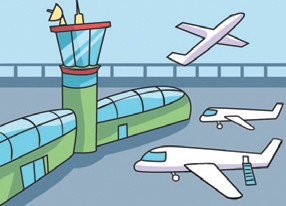 |
|
|
|
|
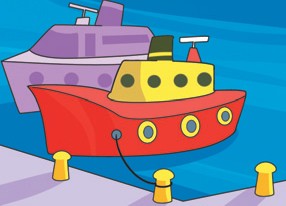 |
|
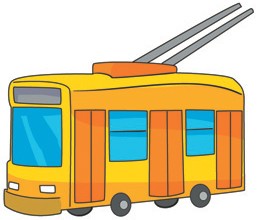 |
|
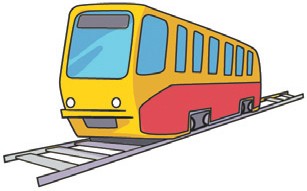 |
|
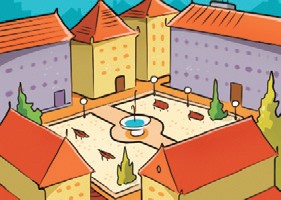 |
|
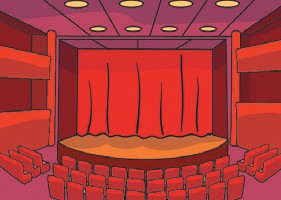 |
|
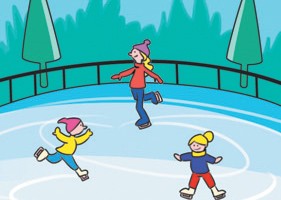 |
Exercise 2, p. 30


• Moscow is the capital city of the Russian Federation. It is an old city, around 860 years old.
• Travelling to and from Moscow is never a problem. It has got three 1) 

• You can go everywhere in Moscow by metro. The Moscow Metro is one of the longest in the world. The city has also got a lot of bus, 3) 
• Moscow is a very green capital. There are over 100 parks and many gardens and 4) 
• Moscow is a capital filled with culture, too. There are over 170 theatres and 5) 
• Moscow is a great city for children, too. They can enjoy the Moscow Zoo, or go to one of the two circuses in the city. There are also two botanical gardens where children can learn about plants and trees.
• For sports lovers, Moscow is a dream city. There are five big stadiums and a lot of pools and 6) 
• The capital welcomes visitors from home and abroad. Today Moscow has got more than 360 hotels. A visit to Moscow will give you plenty to see and do and is definitely worth the trip!
Exercise 3, p. 30
Read the text again and say yes or no.
|
1 Moscow is around 860 years old. |
yes |
|
2 The Moscow Metro can only take you to the city centre. |
yes |
|
3 You can watch a film or a play in Moscow. |
yes |
|
4 You can’t see wild animals in Moscow. |
yes |
|
5 You can’t go ice skating in Moscow. |
yes |
Exercise 4, p. 31
Janet is a tourist in Moscow. Answer her questions.
1. How old is Moscow?
2. Are there any parts?
3. How can I travel around Moscow?
4. Where can I relax?
5. Where can I go and learn about plants and trees?
Exercise 5, p. 31
Over to you: Find some more facts about Moscow. Present them to the class.
Exercise 1, p. 52

citizenplaygroundhospital
Exercise 2, p. 52

Today schools, kindergartens and hospitals in Moscow don’t look the same as in the past. They have got many different shapes, sizes and colours. Because these buildings are so interesting, they become the centre of each district. Architects now use modern materials and paint all kinds of designs on the front walls of schools. You can even say where your classroom is by looking at the design on the wall! There are also safe and beautiful playgrounds for sports and games near the schools.
Modern schools and kindergartens are just like robot-transformers! You can move the walls around inside the school, so you can turn classrooms into large common rooms and sleeping rooms into playrooms. How cool! Just like every person has got a different face, every building has got a different front wall, or face. Moscow schools are all different in colour and shape but they have all got one thing in common – every person and citizen can study there!
Exercise 3, p. 53

near the schools.by looking at the design on the wall.don’t look the same as in the past.into large common rooms.the centre of each district.
|
1 Modern schools, kindergartens and hospitals |
|
|
2 These buildings are |
|
|
3 You can say where your classroom is |
|
|
4 There are safe and beautiful playgrounds |
|
|
5 You can turn classrooms |
Exercise 4, p. 53

|
1 what we call schools for young children. |
|
|
2 a word that is the opposite of different. |
|
|
3 what we call the buildings we go to when we are ill. |
|
|
4 a word that is the opposite of boring. |
|
|
5 what we call places we go to when we want to have fun. |
Exercise 5, p. 53
Over to you: Imagine you are an architect. Design a new school. Think about:
1. What shape is it?
2. Is it big or small?
3. What colour(s) is it?
4. Is there a playground near it?
5. What can classrooms turn into?
Exercise 1, p. 68

satelliteorbit flightspace stationrocketspacesuitmoon buggycosmonauttube
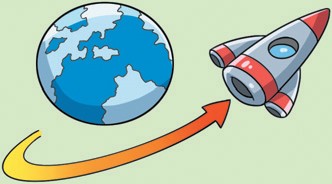 |
|
|
|
|
 |
|
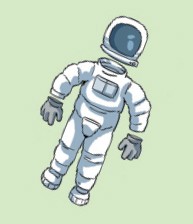 |
|
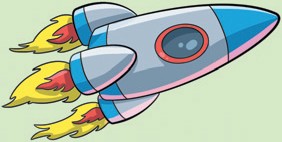 |
|
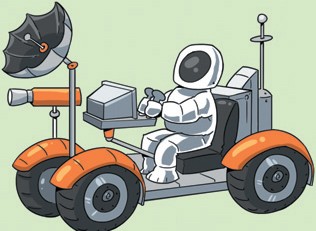 |
|
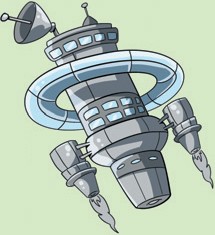 |
|
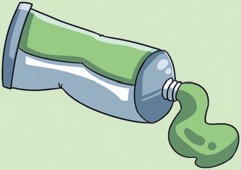 |
Exercise 2, p. 68


Would you like to go on a space trip to distant 1) 
The museum opened in 1981 to celebrate the 20th anniversary of the first manned 2) 

There are models of the first 4) 


You can also see models of Belka and Strelka, the first dogs to go into orbit and come back! There is an interesting film too, about the animals preparing for the trip.
In the big hall there is an exact copy of the Mir 7) 


The museum organises evening activities where you can meet real cosmonauts. Wow! That’s a great way to spend an evening!
Exercise 3, p. 69

|
1 The Space Museum is at … |
|
|
2 The museum opened in … |
|
|
3 The names of the first dogs in orbit were … |
and |
|
4 You can go inside the … and see how cosmonauts live and work. |
|
|
5 You can go to the museum in the … and meet real cosmonauts. |
Exercise 4, p. 69
Think of another museum and answer the questions.
|
1 What is its name? |
|
|
2 Where is it? |
|
|
3 When did it open? |
|
|
4 What can you see and do there? |
Exercise 5, p. 69
Over to you: Write about a museum. Use the answers to the questions in Ex. 4.
Exercise 1, p. 90

islandstreamforestpondvillagepalace
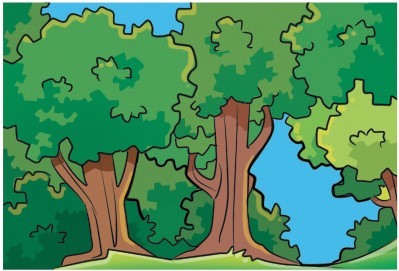 |
|
|
|
|
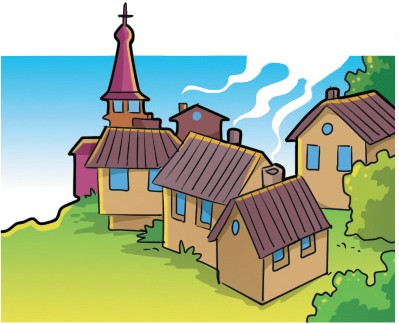 |
|
 |
|
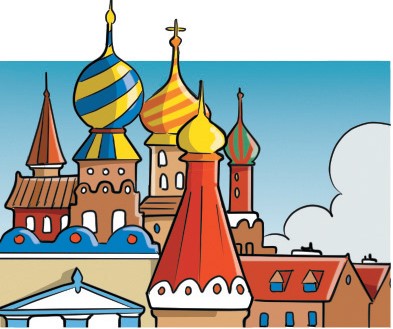 |
|
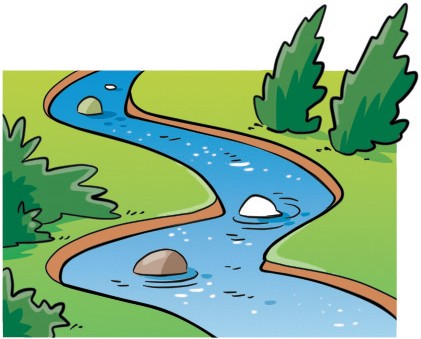 |
Exercise 2, p. 90

Moscow may be a big, busy city but there are still many green areas to enjoy. They include parks, gardens and forests. One of the biggest and most beautiful forests is in Izmailovsky Park, in the east of the city.
Izmailovsky Park has got a long history. There was a village there. Its name was Izmailovo. There’s an island in the park, too. There is an old palace on the island. There is also a pond as well as the river Serebryanka and many streams that run across the park.
A variety of amazing animals live in the park, including hares, squirrels, hedgehogs and moles. Over a hundred species of birds live there, too. You can find hawks, owls, woodpeckers and many sweet-sounding songbirds!
Izmailovsky Park is truly a place of wonder and it is the perfect place to go when you want to have a break! Today, there is a hotel near the park. You can stay there and enjoy the beauty of the area!
Exercise 3, p. 91

Exercise 4, p. 91

1 Izmailovsky Park is in the west of Moscow.
2 There was a forest in the park.
3 There is an old park on the island.
4 Today there is a village on the island.
5 Today, there is a river on the island.
Exercise 5, p. 91
Think of another park. Answer the questions.
1. What’s the name of the park?
2. Where is it?
3. What can you see there?
4. What animals live there?
Exercise 6, p. 91
Over to you: Write about a park. Use the answers to the questions in Ex. 5.
Exercise 1, p. 106

laneherbsberriesadstatuearch bridgedesserttoffee
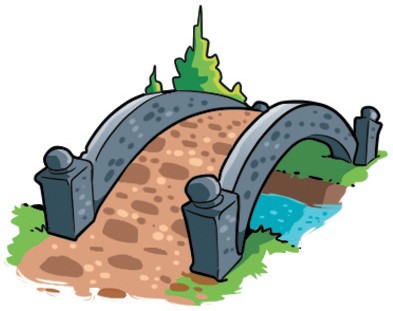 |
|
|
|
|
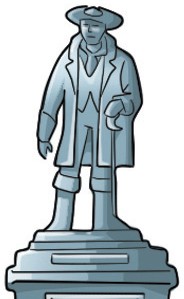 |
|
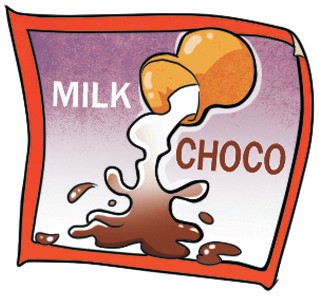 |
|
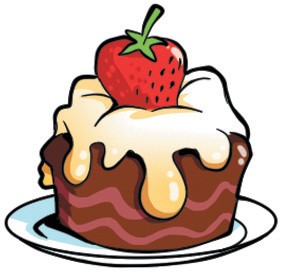 |
|
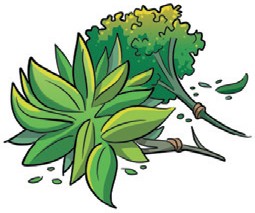 |
|
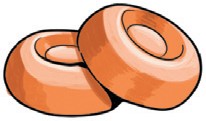 |
|
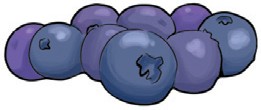 |
Exercise 2, p. 106


Moskvoretsky Bridge
Today, the Moskvoretsky Bridge in Moscow is a long 1) with eight 2) , and it’s one of the busiest bridges in the city. It is very different from the old wooden bridge which used to connect Pyatnitskaya Street and Moskvoretskaya Street. But there is one thing that stays the same. The view of the city from the bridge is amazing!
Museum of Russian Desserts “Konfektnaya”
When you visit the Museum of Russian Desserts in Merzlyakovsky Lane, 15, it feels like you just travelled back in time to a sweet shop of the 19th century! There are old posters with ads for chocolate, 3) , caramels and sweets. You can also treat yourself to a real Russian tea party with traditional desserts made from recipes of long ago! And if that’s not enough, there are even classes where you can learn how to make sugar flowers and chocolate with berries, 4) and even flowers. How delicious is that?
Yuri Gagarin monument
The Yuri Gagarin monument in Leninsky Avenue in Moscow is a fantastic monument to the first man in space. A forty-two-metre 5) of the most famous cosmonaut in the world stands on top of a very high base. It really does make Yuri Gagarin look like the superhero he was in life!
Exercise 3, p. 106

|
1 SRARCHKL |
It is an bridge with lanes. |
|
2 TESUGARA |
You can learn how to make things from there. |
|
3 SBASETAU |
It is on a very high . |
|
4 MONUMENTSC |
This is in Leninsky Avenue. |
|
5 SSWEETSHOPUG |
It looks like a from the past. |
|
6 AVIEWMZILN |
The from there is amazing! |
Exercise 4, p. 107
Which of the places do the sentences in Ex. 3 refer to?
Read again and say.
| 1 |
Moskvoretsky Bridge |
| 2 |
Moskvoretsky Bridge |
| 3 |
Moskvoretsky Bridge |
| 4 |
Moskvoretsky Bridge |
| 5 |
Moskvoretsky Bridge |
| 6 |
Moskvoretsky Bridge |
Exercise 5, p. 107
Think of another interesting place in Moscow and answer the questions.
1. What is its name?
2. Where is it?
3. What is special about it?
Exercise 6, p. 107
Over to you: Make a poster about an interesting place to visit in Moscow. You can use the answers to the questions in Ex. 5. Present the poster to the class.
Exercise 1, p. 16

wheelchairtileblindramplift
Exercise 2, p. 16

People are often not as understanding as they should be towards those who are different or have special educational needs. The most important thing that we must all remember is that we should treat everyone with respect.
In Moscow, the government and all the citizens try to make the city as people-friendly as possible. For example, there are wheelchair ramps, special lifts and even special tiles and signals for the blind. But is this enough? We should also give every citizen the opportunity to express themselves and develop their talents. In Moscow many organisations work with this goal in mind. One of them is a centre called ‘Integration’. Their motto is ‘Culture that is available for everyone!’ At the centre they work hard to make sure that everyone accepts and respects other people’s differences. The people at the centre encourage people with special needs to express themselves through music, poetry, literature and art. Because we are all equal when it comes to creativity!
Exercise 3, p. 17

is called ‘Integration’.through music, poetry, literature and art.with respect.and signals for the blind.ramps.make the city people-friendly.
|
1 We should treat everyone |
|
|
2 In Moscow the government and the citizens try to |
|
|
3 There are wheelchair |
|
|
4 There are special tiles |
|
|
5 A centre in Moscow |
|
|
6 People with special needs at the centre express themselves |
Exercise 4, p. 17

mindsblindabilitypossible
Exercise 5, p. 17
Over to you: You are members of a new centre for people with special needs. In groups, think of a name and a motto for the centre. Make a poster. Draw or attach some pictures.
Exercise 1, p. 32

walnutlollipoptentmazecactus
Exercise 2, p. 32


Everybody loves jam! Chefs from all over the world come to Moscow in August to take part in the Moscow Jam Festival. They bring a lot of different kinds of jam with them.
Every summer you can see big 1) 



There are also many different competitions to choose from such as ‘Guess what flavour this jam is?’ Could you tell the different jams apart? There are many other fun activities too. Sometimes chefs make huge 5) 

Exercise 3, p. 33

|
1 The Moscow Jam Festival is in the summer. |
yes |
|
2 You can see big tents only in Arbat Street. |
yes |
|
3 You can taste different kinds of jam. |
yes |
|
4 You can take part in a competition. |
yes |
|
5 Chefs make small lollipops for the visitors to taste. |
yes |
|
6 You can see paintings of jam. |
yes |
Exercise 4, p. 33
Imagine you are a famous chef. Make your own unusual jam. Present it to the class.
Exercise 5, p. 33
Think of a festival and answer the questions.
1. What is the name of the festival?
2. When is it? Where?
3. What can you see and do there?
Exercise 6, p. 33
Over to you:Write about a festival. Use the answers to the questions in Ex. 5.
Exercise 1, p. 54

fountaindestroytowerpavilion
Exercise 2, p. 54


she didn’t like what she sawCatherine II diedit was worth the waiteven musical fountainsshe wanted to build her royal palace there
The Tsaritsyno state museum and reserve is the biggest park in Moscow. Empress Catherine II of Russia loved the beauty and nature of the area, which at that time was called Bogorodskoye, and .
In 1776, the famous architect Vasily Bazhenov started to build the royal palace. Nearly ten years later, it was almost ready. But when the Empress visited the palace, and ordered the builders to destroy everything! Another architect, Matvey Kazakov started to rebuild the palace in 1786. Sadly, in 1796, all construction stopped because . It was another 200 years before the final completion of the palace, but !
Today you can see beautiful palaces, pavilions, towers, bridges, ponds and ! The beauty of the palace attracts many visitors and there are also exhibitions, concerts and music festivals that you can go to. A visit to the Tsaritsyno museum and reserve is a fantastic and enjoyable day out for all the family!
Exercise 3, p. 55

because the Empress died.music festivals that you can go to.to build the royal palace In 1776.to rebuild it in 1786.in Moscow.because she didn’t like it.
|
1 The Tsaritsyno state museum and reserve is |
|
|
2 The famous architect Vasily Bazhenov started |
|
|
3 The Empress ordered the builders to destroy the palace |
|
|
4 Matvey Kazakov started |
|
|
5 The construction work stopped in 1796 |
|
|
6 Today there are exhibitions, concerts and |
Exercise 4, p. 55

|
1 Catherine II of Russia was born in 1729. |
EMPEROR |
|
2 We visited the reserve and admired the of the area. |
BEAUTIFUL |
|
3 The architect ordered the to destroy everything. |
BUILD |
|
4 There are a lot of in the museum. |
EXHIBIT |
|
5 A visit to the museum is an day out for the whole family! |
ENJOY |
Exercise 5, p. 55
Think of a museum and answer the questions.
1. What is the name of the museum?
2. Where is it?
3. What do you know about its history?
4. What can you see and do there?
Exercise 6, p. 55
Over to you: Write about a museum. Use the answers to the questions in Ex. 5.
Exercise 1, p. 70

poetpoliticiancluesharemobile phone
Exercise 2, p. 70


Join the users of Discover Moscow Photo and learn the history 1) of/in your country! Take selfies and share them 2) to/with your friends.
Discover Moscow Photo is an interesting way 3) of/to learn the history of Russia and meet famous people from the past. You can meet and take photos with great writers, poets, composers, artists and politicians.
Look 4) at/for these people with the help of clues on your mobile phone and take selfies with well-known people such 5) as/like Alexander Pushkin, Pyotr Tchaikovsky, Yuri Gagarin and many others!
By using the application you can:
• find 3D models 6) of/from famous people in the streets of Moscow;
• learn to recognise famous buildings as well 7) so/as places built by famous people;
• take and share photos!
So, what are you waiting 
Exercise 3, p. 70

1 Discover Moscow Photo helps you learn the history of .
2 You can take selfies and share them with your .
3 You can find famous people with the help of on your mobile phone.
4 You can see models of famous people in the streets.
Exercise 4, p. 71

He was a composerHe was an artistHe was a writerHe was a poet
Exercise 5, p. 71

Exercise 6, p. 71
Over to you: Visit the Discover Moscow site, www.um.mos.ru/en/. Choose a monument or a personality. Present it to the class.
This is … . He was a(n) … . This is … . It’s in … .
Exercise 1, p. 92

laptopoverhead projectortabletheadset
Exercise 2, p. 92

Going to school in Moscow is really cool! Moscow schools are modern and well-equipped, and are among the best in the world!
New technology is everywhere! To start with, Moscow pupils use electronic cards ‘Moskvenok’ to enter their schools and parents use an electronic mark-book to check their children’s marks. In many of the classrooms there is an overhead projector or an interactive whiteboard. Today, pupils and teachers use computers, laptops, science labs, 3D-printers and other equipment. Of course, pupils still use textbooks to study, but now they also have a chance to take virtual tours, watch educational videos and even communicate with their classmates and teachers on the Internet. It’s all so interesting!
So if Moscow schools are cool today, just imagine what they will be like in the nearest future! Perhaps pupils will fly to school in small cars which will run on energy from the sun! They won’t use notebooks for writing because they will do all their homework on personal tablets instead! They will also use special virtual reality headsets to study subjects like Geography, Physics and Biology. And what about teachers? Imagine a future where robots will sometimes teach pupils instead! The future looks very exciting for Moscow schools!
Exercise 3, p. 93

virtual toursvirtual reality headsetspersonal tabletselectronic cardselectronic mark-book
|
1 Pupils use these to enter their schools. |
|
|
2 Parents use this to find their children’s marks. |
|
|
3 Pupils take these to watch education videos. |
|
|
4 Pupils may do all their homework on these in the future. |
|
|
5 Pupils may use these to study subjects like Geography, Physics and Biology. |
Exercise 4, p. 93

1 There (not/be) any schools, but learning centres instead. They (be) open seven days a week, 24 hours a day.
2 Students (hear) and see teachers on computers. Teachers (not/be) present.
3 Students (take) a learning pill and they (know) everything straight away.
4 Robots (go) to the students’ houses every morning and (teach) them.
5 Students (visit) other planets on school trips.
Exercise 5, p. 93
Over to you: What will schools be like in the future? Make predictions. Present them to the class.
Exercise 1, p. 108

go hikingcanteenexpeditiongo rafting
Exercise 2, p. 108


help cook meals over a campfirework out how to get therewhere everyone eatslearn computer programminggo to a summer campplay and chat with your friends
All children love holiday time! There are lots of ways to spend your holidays: you can go to the countryside, travel with your family or .
There are many different types of summer camps to choose from. At some camps, you can sleep in tents, , go hiking and even go rafting. There are also ordinary camps, where everything is just like it is at home – comfortable rooms with a real bed and a canteen .
The most important reason to choose a camp is the programme it offers. Many children choose a programme which can help them improve their English or or learn about robotics. Every day in camp is interesting and full of fun. You can take part in expeditions or contests, go to the beach or pool, dance or !
Organising holidays at a camp is not easy – in fact, it’s quite hard work! You have to decide on the right programme, choose the camp and . It is easy to choose the right camp in Moscow, because an organisation called MOSGORTUR does it all for you. Thanks to MOSGORTUR, every year 60,000 children enjoy a fabulous time at summer camp. Happy holidays!
Exercise 3, p. 109

programmingbedsraftingtimecamp
|
1 holiday |
|
|
2 summer |
|
|
3 go |
|
|
4 comfortable |
|
|
5 computer |
1 It’s ! We can go to the countryside.
2 I want to go to a and make lots of friends.
3 We can on the Katun River.
4 If you don’t like sleeping in a tent, the camp has got rooms with in them.
5 I want to go to university and study .
Exercise 4, p. 109

|
Woman: |
MOSGORTUR. 1) What/How can I help you? |
|
|
Max: |
Hello. I’d like 2) any/some information about summer camps. |
|
|
Woman: |
Certainly. What kind of a summer camp are you looking 3) at/for ? |
|
|
Max: |
I want to go to a camp where I can 4) improve/better my English. | |
|
Woman: |
Well, there’s the Language Summer School. You can also learn another language there if you want. | |
|
Max: |
That’s great! 5) Which/Where can I find some more information? | |
|
Woman: |
You can visit 6) my/their website. | |
|
Max: |
Thank you for your help. | |
|
Woman: |
My pleasure. |
Exercise 5, p. 109
Think of a perfect summer camp and answer the questions.
|
1 What is its name? |
|
|
2 Where is it? |
|
|
3 Where do children sleep? |
|
|
4 What kind of a programme does it offer? |
Exercise 6, p. 109
Over to you: Make a poster of your perfect summer camp. Use the answers to the questionsin Ex. 5. Present the poster to the class.
- 17
Янв 17
В моей деревне есть река
Упражнение 1, с. 79
1. Покахонтас считает, что в её деревне есть всё, что должно быть у настоящих индейцев.
1) Как она говорит о том, что есть у неё в деревне?
There is a river in my village. В моей деревне есть река.
There are wigwams in my village. В моей деревне есть вигвамы.
2) Что ещё есть в деревне Покахонтас? Как она об этом говорит?
There is a rabbit in my village. В моей деревне есть кролик.
There is a turkey in my village. В моей деревне есть индюк.
There are bows and arrows in my village. В моей деревне есть луки и стрелы.
There are birds and animals in my village. В моей деревне есть птицы и животные.
There are boats in my village. В моей деревне есть лодки.
3) Рассмотрите рисунок на с. 79 и скажите, сколько предметов, животных и птиц есть в деревне Покахонтас.
There is one turkey in her village.
There are seven wigwams in her village.
There is one rabbit in her village.
There are three bows and nine arrows in her village.
There are four boats in her village.
There are three birds in her village.
Упражнение 3, с. 80
3. Знакомый Покахонтас Джон Смит жил в Лондоне.
1) Рассмотрите картинку, на которой изображён Лондон 17-го века.
2) Покахонтас расспрашивает капитана Смита о Лондоне. Чем отличается деревня Покахонтас от Лондона?
— Is London a village? Лондон — это деревня?
— Yes, it is. It is a very big village. There are many streets in London. Да. Это очень большая деревня. В Лондоне много улиц.
— Oh, there are no streets in my village. О, в моей деревне нет улиц.
— There are big hourses in London. В Лондоне большие дома.
— There are no big hourses in my village. В моей деревне нет больших домов.
— There are many bridges in London. В Лондоне много мостов.
— There are not any bridges in my village. В моей деревне нет мостов.
3) Почему Покахонтас хочет увидеть Лондон?
There are many streets in London.
There are rivers and bridges there.
There are wigwams in her village.
But there are no streets and big houses there.
Ответы к рабочей тетради. Английский язык. Кузовлёв В.П., Перегудова Э.Ш., Пастухова С.А., Стрельникова О.В.
Ответы к учебнику. Английский язык. Кузовлёв В.П., Перегудова Э.Ш., Пастухова С.А., Стрельникова О.В.
Ответы к домашнему заданию. 2 класс. Все предметы
Lesson 23. There is a river in my village. Учебник
4.8 (96.57%) от 35 голосующих
Упражнение 1, с. 69
1. Let’s play! Давайте поиграем в «Морской бой». Хелен и Майк прислали фотографии своих придуманных островов по Интернету.
Выберите пять понравившихся вам фотографий и отметьте галочкой на своём игровом поле. Задавая друг другу вопросы, отгадайте, кто какие фотографии выбрал.
— Is there a fox there?
— Yes, there is. There is a fox on the island. / — No, there isn’t.
— Are there any nice pets there?
— Yes, there are. There are nice pets on the island. / — No, there aren’t.
— Are there any small lakes there?
— Yes, there are. There are small lakes on the island. / — No, there aren’t.
— Is there a kind pirate there?
— Yes, there is. There is a kind pirate on the island. / — No, there isn’t.
— Are there any blue rivers there?
— Yes, there are. There are blue rivers on the island. / — No, there aren’t.
— Are there any pink flamingoes there?
— Yes, there are. There are pink flamingoes on the island. /
— No, there aren’t.
— Are there any merry dwarfs there?
— Yes, there are. There are merry dwarfs on the island. /
— No, there aren’t.
— Is there a big sea there?
— Yes, there is. There is a big sea on the island. / — No, there isn’t.
— Are there any green trees there?
— Yes, there are. There are green trees on the island. / — No, there aren’t.
Упражнение 2, с. 70
2. Маленький принц тоже любит путешествовать. Однажды он прилетел на планету Географа.
1) Какие вопросы он мог бы задать Географу о его планете? Вставьте are или is.
1) — Are there any rivers on your planet?
— I can’t tell.
2) — Are there any funny animals there?
— I can’t tell.
3) — Is there a village on your planet?
— I can’t tell.
4) — Are there any trees and birds there?
— I can’t tell.
5) — Is there a red rose on your planet?
— I can’t tell.
2) Как ответил бы Географ на вопросы Маленького принца? Обведите подходящие ответы.
3) Послушайте, что на самом деле ответил Географ. Хорошо ли он знает свою планету?
Читать А. де Сент-Экзюпери «Маленький принц»
Ответы по английскому языку. 2 класс. Рабочая тетрадь. Кузовлёв В.П., Перегудова Э.Ш., Пастухова С.А., Стрельникова О.В.
Английский язык. 2 класс
Упражнения на there is, there are помогут Вам отработать и на всю жизнь запомнить эту необходимую даже для повседневного общения структуру. Do the exercises with pleasure!
Упражнение 1. Составь и прочитай предложения. Запиши любые пять из них.
|
There is There are |
a an some |
car cup pen bike ducks apples parks milk meat tea egg |
in the cup. in the bag. on the plate. on the table. in the city. in the lake. in the box. at the door. |
Упражнение 2. Вставьте is или are.
- There _____ two cups of tea on the table.
- There _____ some milk in the cup.
- There _____ an orange in the salad.
- There _____ six balls in the box.
- There _____ some cheese on the plate.
- There ______ a blue chair at the door.
- There _____ five chicks and a hen on the farm.
- There _____ a table and nine desks in the classroom.
- There _____ a big window to the left of the door.
- There _____ three rooms in our country house.
- _____ there three cups on the coffee-table?
- ____ there a carpet on the floor?
- There _____ no cats in the sitting room.
- There_____ a cat on the table.
- There_____ 3 dogs in the box
- There _____4 hens in the house.
- There _____ a pot on the table.
- _____ there a bathroom near the kitchen?
- _____ there four rooms in the house?
- _____ there a kitchen under your bedroom?
Упражнение 3. Write in There’s / There’re.
- _________ some sandwiches in the fridge.
- _________ a biscuit on the plate.
- _________ some jam on the table.
- _________ some cornflakes in the cupboard.
- _________ some sugar in the glass.
- _________ two cups of tea on the table.
Упражнение 4. Write in Is there or Are there. Go to your kitchen. Give short answers.
Yes, there is. Yes, there are. No, there isn’t. No, there aren’t.
- _____________ any sausages in the fridge? ____________________.
- _____________ any sugar in the cupboard?____________________.
- _____________ any rolls on the table?____________________.
- _____________ any eggs in the fridge?____________________.
- _____________ any jam in the fridge?____________________.
- _____________ any biscuits in the cupboard?____________________.
Упражнение 5. Напиши каждое предложение в отрицательной и вопросительной форме.
- There are many pupils in the classroom.
- There is some meat on the plate.
- There are four parks in the city.
Упражнение 6. Составь и запиши предложения.
1. pears / there / ten / in the / are / bag / .
2. aren’t / pupils / there / classroom / in the / .
3. an egg / on the / there / plate / is / ?
4. on the / there / a / cat / chair / is / white / .
5. a turtle / on / there / isn’t / farm / this / .
6. at the / two / bikes / door / are / there / ?
Упражнение 7. Что имеется в холодильнике? Посмотрите и напишите. Несколько предложений уже сделаны для примера.
- There’s some cheese.
- There are some apples.
- There’s a cucumber.
Упражнение 8. Circle the correct word.
- There is / There are a big hall downstairs.
- There is / There are two bathrooms upstairs.
- There is / There are beautiful trees in the garden.
- There is / There are a kitchen downstairs.
- There is / There are three bedrooms in the house
Упражнение 9. Find the differences
Пример: There’s some coffee in picture 1. There isn’t any coffee in picture 2.
Упражнение 10. Write in There’s / There’re.
- _______________ a kitten in the kitchen.
- _______________two puppies in the bathroom.
- _______________five mice in the living-room.
- _______________a hamster in the hall.
- _______________three tortoises in the bedroom.
- _______________ a budgie in the garden.
- _______________ three mice under the cupboard.
- _______________four tortoises under the carpet
- _______________ a cat near the cupboard.
- _______________two dolls on the chair.
- _______________ a rabbit under the chair.
Упражнение 11. Circle the correct answer.
1.Is there a fridge in the kitchen?
a Yes, there is. b. No, there isn’t.
2. Are there two cupboards in the kitchen?
a. Yes, there are. b. No, there aren’t.
3. Are there any telephones in the kitchen?
a. Yes, there are. b. No, there aren’t.
4. Is there a cooker in the kitchen?
a Yes, there is. b. No, there isn’t.
Упражнение 12. Circle the correct word. Give short answers about your room.
- Is / Are there a sofa in the room? ______________________
- Is / Are there any chairs? ______________________
- Is / Are there any lamps? ______________________
- Is / Are there a wardrobe in the room? ______________________
- Is / Are there two armchairs? ______________________
- Is / Are there a carpet on the floor? ______________________
Упражнение 13. Write in isn’t or aren’t.
- There ________a sofa in the room.
- There ________any armchairs.
- There ________ any lamps.
- There ________a bookcase.
- There ________a bed.
- There________any books.
Упражнение 14. Find the differences
Пример: There’s a fireplace in picture 1. There’s no fireplace in picture 2.
Упражнение 15. Write the sentences in your exercise-book.
1. the living-room / There’s / in / a sofa
2. in / isn’t / the kitchen / There / a mirror /
3. the bedroom / there / in / Are / beds / two / ?
4. Are / wardrobes / the hall / there / in / two /?
5. a lamp / there / Is / room / your / in / ?
Упражнение 16 Circle the correct sentence.
1 a. There are armchair in the room.
B There are two armchairs in the room.
2. a. There’s a sofa in the bedroom?
b. Is there a sofa in the bedroom?
3. a. There’s a TV in the flat.
b. This is a TV in the flat.
4. a. Are there chairs in the hall?
b. Are there any chairs in the hall?
Упражнение 17. Make up sentences.
1) the bathroom, a mirror, in, is, there.
2) 3 chairs, are, there, the table, near.
3) behind, a lake, is, the house, there?
4) many, there, in, toys, the box, are?
5) isn’t, in, a cat, there, the bedroom
Упражнение 18. Read the sentences. Draw your picture.
There is some food in the fridge. There is some cheese 0n the shelf. There are some sausages to the right of the cheese. There are two cucumbers on the shelf. There is a red tomato to the left of the cucumbers. There is some cabbage behind the tomato.
Упражнение 19. Fill in is/are, was/were.
- There _______ two banks in our street.
- There _____ a cafe behind the supermarket last year. Now there _______ a museum there.
- There _____ a cinema and a sports centre to the right of the park.
- Five years ago there_____two shops in Central Square. Now there_____ two cafes, a theatre and a cinema.
Упражнение 20. Draw where these things are.
There are two books on the table. There is a cat under the table. There is a box between the table and the TV. There is a vase to the right of the chair. There is a ball behind the TV. There is a shoe in front of the chair.
Ответы к упражнениям.
Упражнение 1.
Your own answers.
Упражнение 2.
1 are, 2 is, 3 is, 4 are, 5 is, 6 is, 7 are, 8 is, 9 is, 10 are, 11 are, 12 is, 13 are, 14 is, 15 are, 16 are, 17 is, 18 is, 19 are, 20 is.
Упражнение 3.
1 There’гe, 2 There’s , 3 There’s, 4 There’гe, 5 There’s, 6 There’гe
Упражнение 4.
Вопросы: 1 Are there, 2 Is there, 3 Are there, 4 Are there, 5 Is there, 6 Are there
Your own short answers.
Упражнение 5.
- There aren’t many pupils in the classroom.
Are there many pupils in the classroom?
- There is no meat on the plate.
Is there any meat on the plate?
- There aren’t four parks in the city.
Are there four parks in the city?
Упражнение 6.
- Ther are ten pears in the bag.
- There aren’t pupils in the classroom.
- Is there an egg on the plate?
- There is a white cat on the chair.
- There isn’t a turtle on this farm.
- Are there two bikes at the door?
Упражнение 7.
Your own answers.
Упражнение 8.
1 There is, 2 there are, 3 there are, 4 there is, 5 there are
Упражнение 9.
Your own answers.
Упражнение 10.
1 There’s, 2 There’re , 3 There’re, 4 There’s, 5 There’re, 6 There’s, 7 There’гe, 8 There’re , 9 There’s, 10 There’гe, 11 There’s
Упражнение 11.
1 a, 2b, 3b, 4a
Упражнение 12.
Вопросы:1 Is, 2 Are, 3 Are, 4 Is, 5 Are, 6 Is
Your own short answers.
Упражнение 13.
1 isn’t, 2 aren’t, 3 aren’t, 4 isn’t, 5 isn’t, 6 aren’t.
Упражнение 14.
Your own answers.
Упражнение 15.
- There’s a sofa in the living-room.
- There isn’t a mirror in the kitchen,
- Are there two beds in the bedroom?
- Are there two wardrobes in the hall?
- Is there a lamp in your room?
Упражнение 16.
1 b, 2 b, 3 a, 4 b.
Упражнение 17.
- There is a mirror in the bathroom.
- There are 3 chairs near the table.
- Is there a lake behind the house?
- Are there many toys in the box?
- There isn’t a cat in the bedroom.
Упражнение 18.
A picture of your own.
Упражнение 19.
1 are, 2 was, is, 3 is, 4 were, are
Упражнение 20.
A picture of your own.
I hope you liked the exercises. Share them with friends!
Понравилось? Сохраните на будущее и поделитесь с друзьями!
Оборот there is there are — это один из случаев, когда в русском языке нет прямого, стопроцентного эквивалента английской конструкции, поэтому его употребление нередко вызывает трудности у начинающих.
Между тем, оборот there is there are употребляется довольно часто не только в деловом или научном языке, но и в обыденной повседневной речи. Это одна из конструкций, употреблять и понимать которые нужно без малейших затруднений, на полном автомате. К счастью, его употребление не вызывает труда, самое главное — понять значение этой конструкции.
Содержание:
- Значение конструкции there is there are.
- В чем трудность оборота there is there are?
- Употребление оборота there is there are в таблицах с примерами.
- Утвердительная форма.
- Отрицательная форма.
- Вопросительная форма.
- Видеоурок на тему There is There are.
- Оборот There is There are во временах Perfect (для продвинутого уровня).
Буквально there is переводится как «здесь естьприсутствует», а there are как «здесь естьприсутствуют» (во множественном числе). Но точнее будет сказать, что оборот there + to be используется для обозначения присутствия или наличия чего-либо или кого-либо.
Например:
There is an old church in this town. — В этом городе есть старая церковь.
There are ten or eleven kids in the classroom. — В классе десять или одиннацать детей.
There is always a way out. — Выход всегда есть.
There are two ways out of this tunnel. — Из этого тоннеля есть два выхода.
В чем трудность оборота There is There are?
Трудность в том, что, как видно в примерах выше, эта конструкция не переводится на русский язык неким единственно верным способом — нужно подбирать перевод по смыслу. Сами слова there is there are, как правило, не переводятся буквально («здесь есть»), их значение передается другими средствами.
Это может быть глагол «быть», «являться», «присутствовать».
There is a nice pizza place in this mall. — В этом торговом центре есть хорошая пиццерия.
There is only one player. Where are the others? — Здесь присутствует только один игрок. Где остальные?
Но в русском языке глаголы типа «быть» часто опускаются.
Good, now there are all four players. Deal the cards. — Хорошо, сейчас здесь (есть) все четверо игроков. Сдайте карты.
What other door? There is only one door. — Какая еще другая дверь? Здесь (есть) только одна дверь.
В общем, нужно запомнить, что если вы хотите сказать что-то о наличииотсутствии предмета или лица в каком-то месте, то зачастую для этого можно использовать оборот there is there are.
Здесь есть кресло. — There is an armchair.
В этом доме много зеркал. — There are many mirrors in this house.
Только не путайте наличиеотсутствие с обладанием, со случаем, когда мы говорим, что некое лицо чем-то обладает. В этом случае по смыслу подходит глагол to have (иметь):
У меня есть кресло. — I have an armchair.
У меня много зеркал в доме. — I have many mirrors in my house.
Употребление оборота There is There are в таблицах с примерами
Оборот there is there are может употребляться в утвердительной (как в примерах выше), отрицательной и вопросительной формах. Он также может употребляться в разных временах: в настоящем, прошедшем и будущем. В таблицах ниже приведены примеры употребления there is there are во временах Simple (Indefinite),
Этот оборот также употребляется во временах Perfect (в Continuous и Perfect Continuous не употребляется), однако намного реже, чем в Simple, особенно в разговорной речи. Примеры приводятся в таблице в конце этой статьи, однако эта тема относится к «продвинутым», а сами обороты малоупотребительны, некоторые вообще практически не употребляются даже в письменной речи.
Утвердительная форма
В утвердительной форме оборот there is are используется следующим образом:
| There is there are в утвердительной форме | ||
|---|---|---|
| Единственное число | Множественное число | |
| Present Simple | There is
|
There are
|
| Past Simple | There was
|
There were
|
| Future Simple | There will be
|
There will be
|
Иногда в предложении перечисляются несколько предметов, при этом первый стоит в единственном числе, а второй во множественном (или наоборот). В таком случае оборот there + to be согласуется в числе с существительным, которое идет после него.
Например:
There is a small box and two bigger boxes. — Здесь маленькая коробочка и две коробки побольше.
Первым идет существительное в единственном числе, поэтому глагол тоже в единственном — there is.
There are two big boxes and one bag. — Здесь две большие коробки и одна сумка.
Первым в перечислении идет существительное во множественном числе, глагол принимает соответствующую форму — there are.
Отрицательная форма
Отрицательная форма может строиться двумя способами:
1. С помощью частицы not.
В этом случае обычно используются сокращения: there is not = there isn’t, there was not = there wasn’t, there were not = there werent’, there will not be = there won’t be.
Если после not идет исчисляемое существительное в единственном числе, перед ним стоит неопределенный артикль:
There isn’t a chair here. — Здесь нет стула.
Если после not идет исчисляемое существительное во множественном числе или неисчисляемое существительное, то добавляется местоимение any — not any.
There aren’t any chairs here. — Здесь нет стульев.
There isn’t any oil here. — Здесь нет нефти.
2. С помощью местоимения no.
После no идет существительное без артикля или местоимения any.
There is no chair (chairs) in the room. — В комнате нет стула (стульев).
There is no oil here. — Здесь нет нефти.
Между этими вариантами есть небольшая стилистическая разница, понятная носителям языка. Кроме того, некоторые устойчивые выражения используются либо с no, либо с not просто потому, что так принято.
There is no point in doing this! — Нет никакого смысла в том, чтобы это делать!
Обычно считается, что отрицание с not более категоричное, но на самом деле все сильно зависит от контекста, ситуации. На мой взгляд, как бы вы ни сказали, no или not, вас поймут в любом случае.
| There is there are в отрицательной форме | ||
|---|---|---|
| Единственное число | Множественное число | |
| Present Simple | There is no isn’t
|
There are no aren’t
|
| Past Simple | There was no wasn’t
|
There were no wasn’t
|
| Future Simple | There will be no There won’t be any
|
There will be no There won’t be any
|
Вопросительная форма
Чтобы построить вопросительную форму, нужно переставить глагол to be в начало предложения.
| There is there are в вопросительной форме | ||
|---|---|---|
| Единственное число | Множественное число | |
| Present Simple | Is there..?
|
Are there..?
|
| Past Simple | Was there..?
|
Were there..?
|
| Future Simple | Will there be..?
|
Will there be..?
|
Видеоурок на тему There is There are
Тема There is There are достаточно подробно и очень доступно разъясняется в видеоуроке на Puzzle English. Напоминаю, на этом сервисе для изучения английского языка можно не только посмотреть бесплатные видеоуроки, но и пройти упражнения (составление фраз).
Читайте также: Puzzle English — учим английский язык с помощью сериалов.
Оборот There is There are во временах Perfect (для продвинутого уровня)
Внимание: данная тема является очень трудной, продвинутой и полной нюансов. Она ни в коем случае НЕ для начинающих. Привожу ее общий обзор только для ознакомительных целей.
Данный оборот иногда употребляется во временах Perfect, правда намного реже, чем в Simple-временах, особенно в разговорной речи. Для полноты картину добавлю таблицу употребления there is there are в Perfect. Изучать ее есть смысл, только если вы уже знаете, что такое: Present Perfect, Past Perfect и Future Perfect и понимаете в чем заключаются особенности их значения.
Как и в вышеуказанных видовременных формах, в конструкциях типа There has been речь идет о действии, совершившемся до момента речи, результат которого актуален на момент речи.
|
Утвердительная форма |
||
|---|---|---|
| Единственное число | Множественное число | |
| Present Perfect | There has been
|
There have been
|
| Past Perfect | There had been
|
There had been
|
| Future Perfect | There will have been
|
There will have been
|
| Отрицательная форма | ||
| Единственное число | Множественное число | |
| Present Perfect | There has been no hasn’t been
|
There has been no hasn’t been
|
| Past Perfect | There had been no hadn’t been
|
There had been no hadn’t been
|
| Future Perfect | There will have been no There won’t have been
|
There will have been There will have been no
|
| Вопросительная форма | ||
| Единственное число | Множественное число | |
| Present Perfect | Has there been..?
|
Have there been..?
|
| Past Perfect | Had there been..?
|
Had there been..?
|
| Future Perfect | Will there have been..?
|
Will there have been..?
|
Примечания:
- Некоторые из этих форм, например Will there have been..? теоретически возможны, но практически встречаются крайне редко даже в письменной речи.
- В отрицательной форме, как и в случае с временами Simple, могут использоваться варианты nonot.
- Предложения, начинающиеся с Had there been… чаще являются условными третьего типа, но с особой перестановкой.
- If there had been no rain, we would have died. — Если бы не было дождя, мы бы погибли.
- Had there been no rain, we would have died. — Не будь дождя, мы бы погибли (смысл тот же, но есть «усиление»).
Здравствуйте! Меня зовут Сергей Ним, я автор этого сайта, а также книг, курсов, видеоуроков по английскому языку.
Подпишитесь на мой Телеграм-канал, чтобы узнавать о новых видео, материалах по английскому языку.
У меня также есть канал на YouTube, где я регулярно публикую свои видео.
К содержанию
Анатолий
Анатольевич
Eфремов
Раздел 3 — Языковой материал (задания по Грамматике и Лексике)
Прочитайте приведённый ниже текст. Преобразуйте слова, напечатанные заглавными буквами в конце строк, обозначенных номерами 18-26, так, чтобы они грамматически соответствовали содержанию текста. Заполните пропуски полученными словами. Каждый пропуск соответствует отдельному заданию 18-26.
| 18 | It was Friday evening. Liz was looking forward to Saturday because it was her husband’s birthday. She had been preparing for this event for a long time. She had invited __________________ college friends and they were all coming from different cities. | THEY |
| Ответ: | their | |
| 19 | The best part was that Carlos, her husband, __________________ anything about the arrangements. It was going to be a surprise. | NOT/KNOW |
| Ответ: | did not know / didn’t know | |
| 20 | Liz __________________ sandwiches when Carlos came into the kitchen. | MAKE |
| Ответ: | was making | |
| 21 | “Look, darling,” he said, “I know it’s my birthday tomorrow but I don’t want to do anything special for it.” Liz thought, “I wish I __________________ cancel the party but I can’t – it’s too late. |
CAN |
| Ответ: | could | |
| 22 | The party will take place anyway and it will be the __________________ party ever”. | GOOD |
| Ответ: | best | |
| 23 | When Carlos came home on Saturday, there __________________ lots of people there. | BE |
| Ответ: | were | |
| 24 | Carlos __________________ them that he felt very happy to see them all and it was true! | TELL |
| Ответ: | told | |
| 25 | The guests enjoyed the dinner and then Liz brought in a cake. The cake __________________ with chocolates and jellies, and it had as many candles as the number of years Carlos had reached that day. | DECORATE |
| Ответ: | was decorated | |
| 26 | Carlos couldn’t blow them out on the __________________ try and his friends were delighted to help him. | ONE |
| Ответ: | first |
84DFD3
Прочитайте приведённый ниже текст. Преобразуйте слова, напечатанные заглавными буквами в конце строк, обозначенных номерами 27-32, так, чтобы они грамматически и лексически соответствовали содержанию текста. Заполните пропуски полученными словами. Каждый пропуск соответствует отдельному заданию 27-32.
| 27 | The city of St Davids is situated on the south-west coast of Wales. If you’re looking for an __________________ place to go, this is your destination. | USUAL |
| Ответ: | unusual | |
| 28 | It was granted city status by Queen Elizabeth II but in reality St Davids looks like an __________________ small village. | ATTRACT |
| Ответ: | unattractive | |
| 29 | It is actually the smallest city in Britain with a __________________ of just over 1,600. | POPULATE |
| Ответ: | population | |
| 30 | St Davids has a __________________ medieval cathedral which dates back to the 12th century. | BEAUTY |
| Ответ: | beautiful | |
| 31 | Today it is a __________________ place with narrow streets filled with cafes, hotels and art galleries – but only one pub! | CHARM |
| Ответ: | charming | |
| 32 | St Davids is famous for its sandy beaches and clear water. Whitesands Bay is a regular __________________ of the prestigious European Blue Flag award. | WIN |
| Ответ: | winner |
5189D2
Практически во всей английской речи, устной и письменной, встречается оборот there is/there are. Этот оборот широко распространен, поскольку в общении часто возникает необходимость сообщить о местонахождении предметов, объектов или лиц.
Предложения начинающиеся с конструкции there is/are выражают наличие в определенном месте или отрезке времени какого-либо лица или предмета, факта, или явления еще неизвестного собеседнику или читателю.
Несколько примеров:
There is a vase on the floor.
На полу находится ваза (или: На полу ваза)
There are books on the shelf.
На полке лежат книги (или: На полке книги).
Так же рекомендуем посмотреть видео вариант этого урока.
Когда употреблять there is, а когда there are
Если мы хотим сказать что в определенном месте находится какой-то один предмет, то употребляем there is, если хотим сказать что в определенном месте находится несколько предметов, то используем there are.
There is употребляется перед существительным или местоимением в единственном числе, there are — перед существительным во множественном числе.
There is a cup on the table.
На столе стоит чашка.
There are cups on the table.
На столе стоят чашки.
Напомним, что все существительные в английском языке делятся на исчисляемые и неисчисляемые. Исчисляемые (те, что можно считать: один, два, три) могут быть в единственном числе или множественном (одна собака, две собаки).
Неисчисляемые всегда имеют форму единственного числа, поэтому перед неисчисляемыми существительными (вода, рис, молоко и др.) всегда ставится there is. Например:
There is juice on the shelf.
На полке есть сок.
There is some milk in the fridge.
В холодильнике есть немного молока.
There is sauce in the fridge.
В холодильнике есть соус.
There is some sour cream in the fridge.
В холодильнике есть немного сметаны.
Some и any
Нередко перед существительным может стоять some или any, что вызывает затруднения какой оборот использовать — there is или there are. Some и any обозначают небольшое количество чего-нибудь — «немного», и на русский язык обычно не переводятся.
Основное назначение some и any указать на небольшое количество предметов или вещества, которые могут быть выражены неисчисляемым существительным или множественным числом исчисляемого. Поэтому перед some может быть как there is (если далее стоит неисчисляемое существительное — some milk, some butter), так и there are (если далее стоит исчисляемое во множественном числе — some cups, some plates).
There is some milk in the fridge.
В холодильнике есть немного молока.
There is some sugar on the table.
На столе есть cахар.
There are some apples in the bag.
В сумке есть немного яблок.
Неопределенное местоимение any используется в вопросах и отрицаниях. В остальном тут все то же. Перед any надо ставить there is, если после any стоит неисчисляемое существительное и there are, если существительное исчисляемое во множественном числе.
There are not any apples in the bag.
В сумке нет никаких яблок.
There is not any juice in the kitchen.
На кухне нет никакого сока.
There are not any pens on the table.
На столе нет ручек.
Перечисление разных предметов
Если необходимо перечислить несколько разных предметов, то в зависимости от типа первого предмета надо выбирать оборот there is или there are — если перечисление начинается с единственного числа, то используем there is; если с множественного числа — there are. Примеры:
There is a fridge and two stools in my kitchen.
На моей кухне есть холодильник и два табурета.
There are some plates, cups, knives and a microwave oven in my kitchen.
На моей кухне есть тарелки, чашки, ножи и микроволновка.
Правило перевода оборота there is/are на русский язык
Перевод таких предложений начинается с конца, с обстоятельства места (отвечает на вопрос «где?») или сказуемого, если обстоятельство отсутствует. Примеры предложений с переводом с оборотом there is/there are:
There is a window in the room.
В комнате есть окно.
There is some butter in the fridge.
В холодильнике есть немного масла.
There is a meeting tonight.
Сегодня вечером будет собрание.
There are some ways of solving this task.
Есть несколько способов решения этой задачи.
There is nothing to laugh at.
Здесь не над чем смеяться.
There is something to eat in the kitchen.
На кухне есть что поесть.
There is no need to discuss this again.
Нет необходимости обсуждать это снова.
There is something important to deal with.
Есть кое-что важное.
Элемент конструкции there является формальным, он не переводится и не имеет самостоятельного значения. С помощью there начинается предложение и вводится смысловое подлежащее, обычно выраженное существительным (реже местоимением) или целым предложением.
Вы заметили, что при переводе предложений с оборотом there is/are на русский могут использоваться глаголы типа: есть, находится, лежит, стоит, сидит и др. Мы можем их опустить и сказать: «На столе книга», «На окне цветы», «В зале окно», но чаще для выражения этой мысли мы используем соответствующий глагол «На столе лежит книга», «На окне стоят цветы», «В зале есть окно». Оба варианта перевода допустимы.
Как видно из примеров конструкцию there is/are невозможно переводить подстрочно, то есть дословно. Перевод на русский язык начинается с конца предложения.
Отрицательная форма оборота there is/there are
Отрицательные предложения с оборотом there is/there are могут быть построены двумя способами:
- при помощи частицы not — there isn’t/there aren’t
- или при помощи местоимения no, которое ставится перед существительным; данные существительные употребляются без артикля и без местоимения any.
Посмотрим примеры:
NOT
There isn’t any milk in the fridge.
В холодильнике нет молока.
There aren’t any dogs near the house.
Рядом с домом нет собак.
There is not any food at home.
Дома нет еды.
NO
There is no milk in the fridge.
В холодильнике нет молока.
There are no dogs near the house.
Рядом с домом нет собак.
There is no food at home.
Дома нет еды.
Вопросы с оборотом there is/there are
Поскольку в данной конструкции есть глагол to be, для построения вопросительных предложений глагол to be (is/are, was/were) ставится на первое место в предложении. Другими словами, чтобы задать вопрос нам надо взять утвердительное предложение с этим оборотом и поменять местами «there» и «is/are» (или «was/were» если предложение в прошедшем времени):
There is a cat on the sofa.
На диване кошка.
Is there a cat on the sofa?
На диване есть кошка?
Еще пара примеров:
Is there a book on the desk?
На столе есть книга?
Were there flowers in the room?
В комнате были цветы?
Это относится к формированию общих вопросов, другие типы вопросов с конструкцией there is/are формируются с учетом порядка слов соответствующего данному типу вопроса.
Вопросительная форма оборота there is/there are широко применяется в случаях, когда мы интересуемся местоположением некоего объекта или наличием чего-либо где-либо.
Например, мы можем интересоваться наличием в городе/деревне каких-то объектов или предметов, информацией об аренде жилья, наличием и расположением определенных удобств в отеле; вопросы могут касаться наличия в нашем багаже/машине/комнате/сумке/кармане определенных вещей и предметов.
Случаев применения данного оборота много, но все они по сути представляют собой вопрос о наличии/расположении в определенном месте определенного предмета/объекта.
Оборот there is/are в разных грамматических временах
Оборот there is/there are показывает время Present Simple, то есть мы говорим о том, что где-то что-то есть (находится) сейчас, то есть в настоящем. Но мы можем сказать и о том, что предмет или лицо находились (Past Simple), или будут (Future Simple) находиться в определенном месте.
Другими словами, данный оборот применяется в настоящем, прошедшем и будущем времени, при этом соответственно меняется глагол to be, который и показывает в каком (или о каком) времени идет речь:
- There is/there are — Present Simple
- There was/there were — Past Simple
- There will be — Future Simple
There was nothing to say.
Тут нечего было сказать.
There were cups on the table.
На столе стояли чашки.
There will be flowers on the window sill.
На подоконнике будут цветы.
Примечание. Если по смыслу предложения требуется наличие наречия there (там), то оно повторяется в конце предложения.
Когда место обозначается словом «там» (there) то в предложении с оборотом there is/are слово there появиться в начале и конце предложения, но в русском переводе наречие «там» используется один раз:
There is a new hospital (over) there.
Там новая больница.
There was a great deal of money there.
Там было много денег.
Рассмотрим ряд примеров с оборотами there is/are для различных времен (Present Simple, Past Simple, Future Simple, Present Perfect):
What is there in your right pocket? — There are my flat’s keys.
Что у тебя в правом кармане? — Вот ключи от моей квартиры.
Were there many guests at your party? — No, there weren’t.
Было много гостей на вашей вечеринке? — Нет, не много.
Will there be your ceremony on Friday? — Yes, there will. Please come.
Будет ли твоя церемония в пятницу? — Да, будет. Пожалуйста, приезжайте.
How many people are there in your party?
Сколько людей в твоей компании?
There is some coffee and sugar in the kitchen, isn’t there?
На кухне есть кофе и сахар, не так ли?
There has been a lot of snow for the last five days, hasn’t there?
Последние пять дней было много снега, не так ли?
I wonder if there is some bread in the kitchen.
Интересно, есть ли хлеб на кухне?
Замена there is/are на be-construction
Местонахождение объекта или лица может выражаться другими способами, в частности при помощи глагола to be. Но между этими предложениями существует смысловая разница. Сравните примеры:
There is a book on the desk.
На столе книга (смысловой акцент на месте — на столе, которое как бы занято книгой). В этом случае мы как бы даем ответ на вопрос: что находится на столе?
The book is on the desk.
Книга на столе (смысловой акцент на книге). В этом случае мы как бы отвечаем на вопрос: где находится книга.
Примеры ситуаций с употреблением оборота there is/there are
На практике данный оборот встречается повсеместно, мы приведем несколько типичных ситуаций, когда вам него не обойтись.
Ситуация 1. Аренда квартиры, вопросы о наличии предметов и удобств
Вы хотите снять с семьей квартиру или недорогой семейный отель, вас будут интересовать предметы, которые вы хотели бы иметь. Вы читаете объявление:
A three-room flat, 30 min by bus from London a shower, 2 bed rooms, a small kitchen, the Internet. There is a well-equiped play ground next to the house, two parking spaces for each flat. There is 24 hour security service.
Трехкомнатная квартира, 30 минут на автобусе от Лондона, душ, 2 спальни, небольшая кухня, интернет. Рядом с домом есть хорошо оборудованная игровая площадка, два парковочных места для каждой квартиры. Имеется круглосуточная охрана.
Если объявление вас заинтересовало, то следующий ваш шаг — звонок и уточняющие вопросы относительно предметов и удобств в квартире. Вы можете спросить о наличии бытовой техники, мебели, бытовых предметов. Во всех перечисленных случаях уместно использовать вопросительную форму оборота there is/there are:
Is there a fridge in the kitchen?
На кухне есть холодильник?
Is there a dishwasher in the kitchen?
На кухне есть посудомоечная машина?
Is there a microwave oven in the kitchen?
На кухне есть микроволновая печь?
Is there a gas cooker in the kitchen?
На кухне есть газовая плита?
Is there a vacuum cleaner in the flat?
В помещении есть пылесос?
Are there any plates in the kitchen?
На кухне есть тарелки?
Are there any knives in the kitchen?
На кухне есть ножи?
Are there any forks in the kitchen?
На кухне есть вилки?
Are there any frying pans in the kitchen?
На кухне есть сковородки?
Специальный вопрос:
What modern conveniences are there in your flat/house? — There is gas, hot and cold running water, a private telephone, a bath (a shower), a fireplace, central heating.
Какие современные удобства есть в вашей квартире/доме? — Есть газ, горячая и холодная вода, личный телефон, ванна (душ), камин, центральное отопление.
Ситуация 2. Спрашиваем местонахождение объектов внутри здания, в офисе
Если вы впервые пришли в некое здание или офис вам может потребоваться задать несколько вопросов:
Is there a lift in your building?
В вашем здании есть лифт?
Is there a coffee shop in the building?
В здании есть кофейня?
Is there a toilet in the building?
В здании есть туалет?
Is there a hair and beauty salon in the building?
В здании есть парикмахерская и салон красоты?
Is there a bank branch in the building?
В здании есть отделение банка?
Is there a travel agent’s in the building?
В здании есть турагентство?
Is there a coffee machine in the building?
В здании есть кофеварка?
Are there any good programmers in your office?
В вашем офисе есть хорошие программисты?
Are there any good engineers in your office?
В вашем офисе есть хорошие инженеры?
Are there any good managers in your office?
В вашем офисе есть хорошие менеджеры?
Are there any good cleaners in your office?
В вашем офисе есть хорошие уборщики?
Are there any good security personnel in your office?
В вашем офисе есть хорошие охранники?
Are there any good doctors in your office?
В вашем офисе есть хорошие врачи?
Are there many immigrants from Ukraine in your country?
Много ли в вашей стране иммигрантов из Украины?
Ситуация 3. Спрашиваем местонахождение объектов на улице в незнакомом городе
Если вы оказались в незнакомом городе, то обязательно дано знать как спросить где что находится. Например:
Is there a good restaurant in this street?
На этой улице есть хороший ресторан?
Is there a tennis court in the vicinity?
Поблизости есть теннисный корт?
Is there a playground in the vicinity?
Поблизости есть детская площадка?
Is there a hospital in the street?
На улице есть больница?
Is there a library in the vicinity?
А поблизости есть библиотека?
Is there a post-office in the street?
На улице есть почта?
Ситуация 4. Спрашиваем об удобствах, сервисах, объектах в гостинице
Находясь в гостинице вам также может потребоваться узнать местонахождение различных объектов и сервисов. Например:
Is there a gym in the hotel?
В отеле есть спортзал?
Is there a sports ground in the hotel?
В отеле есть спортивная площадка?
Is there a car hire service in the hotel?
В отеле есть служба проката автомобилей?
Is there a swimming pool in the hotel?
В отеле есть бассейн?
Is there a coffee shop in the hotel?
В отеле есть кафе?
Is there a coffee machine in the hotel?
В отеле есть кофеварка?
Is there a laundry room in the hotel?
В отеле есть прачечная?
Is there a security service in the hotel?
В отеле есть служба безопасности?
Is there a conference room in the hotel?
В отеле есть конференц-зал?
Примечание 1. Замена оборота there is/are другими глаголами
Значение оборота there is/are может быть выражено эквивалентной структурой с глаголом to be или to have и некоторыми другими глаголами to see, to know, to notice. Посмотрим примеры:
There is/are
There are two children in the Browns’ family.
В семье Браунов двое детей.
There were only two women in the office familiar to me.
В офисе было только две женщины, знакомые мне.
There is a dog in the living room.
В гостиной есть собака.
There were only a few French books in your home library.
В вашей домашней библиотеке было всего несколько французских книг.
Эквивалентная замена
The Browns have two children.
У Браунов двое детей.
I knew only two women in the office.
Я знал только двух женщин в офисе.
I see a dog in the living room.
Я вижу собаку в гостиной.
I noticed only a few French books in your home library.
Я заметил только несколько французских книг в вашей домашней библиотеке.
Примечание 2. There + другие глаголы
После there могут употребляться и другие глаголы, например, to live, to exist, to stand, to come, to appear, to go и другие (не обязательно требующие после себя обстоятельство места (отвечает на вопрос «Где?», а также модальные глаголы). Приведем примеры:
Once upon a time there lived an old man and an old woman near the seaside.
Жили-были старик со старухой у самого моря.
Then there came some claps of thunder.
Затем раздались раскаты грома.
Look! There has appeared a helicopter at last.
Наконец появился вертолет!
There exist many other species of birds.
Тут существуют и другие виды птиц.
Look! Someone is knocking at the door. There must be John.
Кто-то стучит в дверь. Это должно быть Джон.
Look at the sign! There must be a bus stop near the hotel.
Взгляни на знак. Возле отеля должно быть есть автобусные остановки.
Видео урок
Заключение
В уроке подробно рассмотрены правила и случаи употребления оборота there is — there are в настоящем, прошедшем и будущем времени, а также в вопросительной и отрицательной форме.
Если у вас остались вопросы по теме, то задавайте их в комментариях к статье.
Thank you for reading my grammar lesson.
«I remembered God and was troubled; I complained and my spirit was overwhelmed. (Psalm. 76:3)



